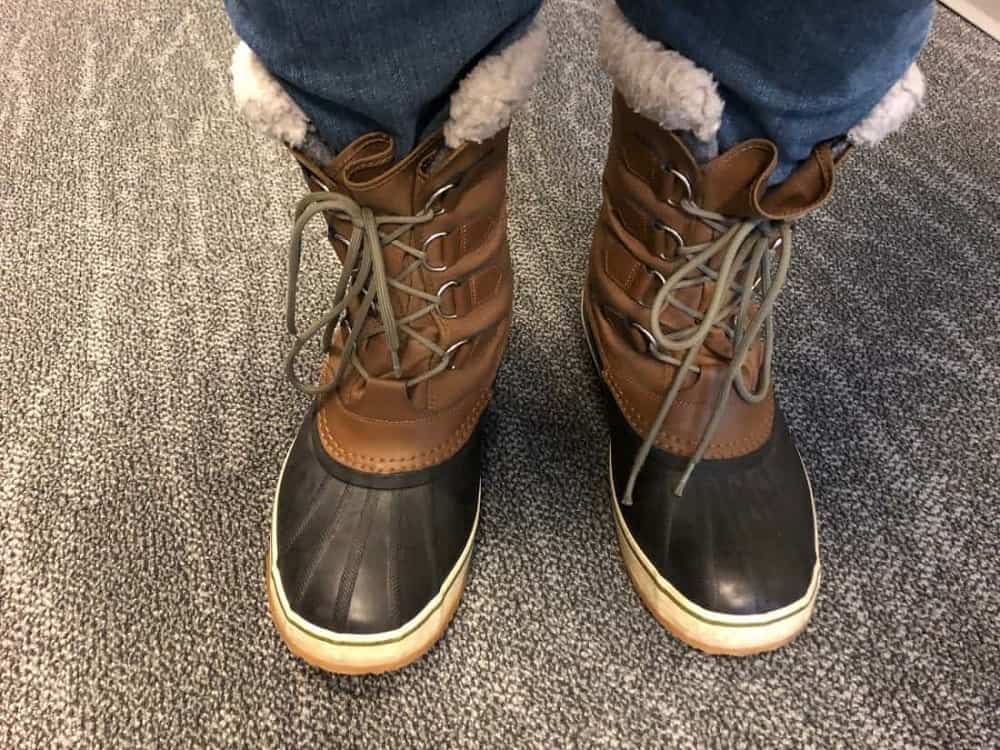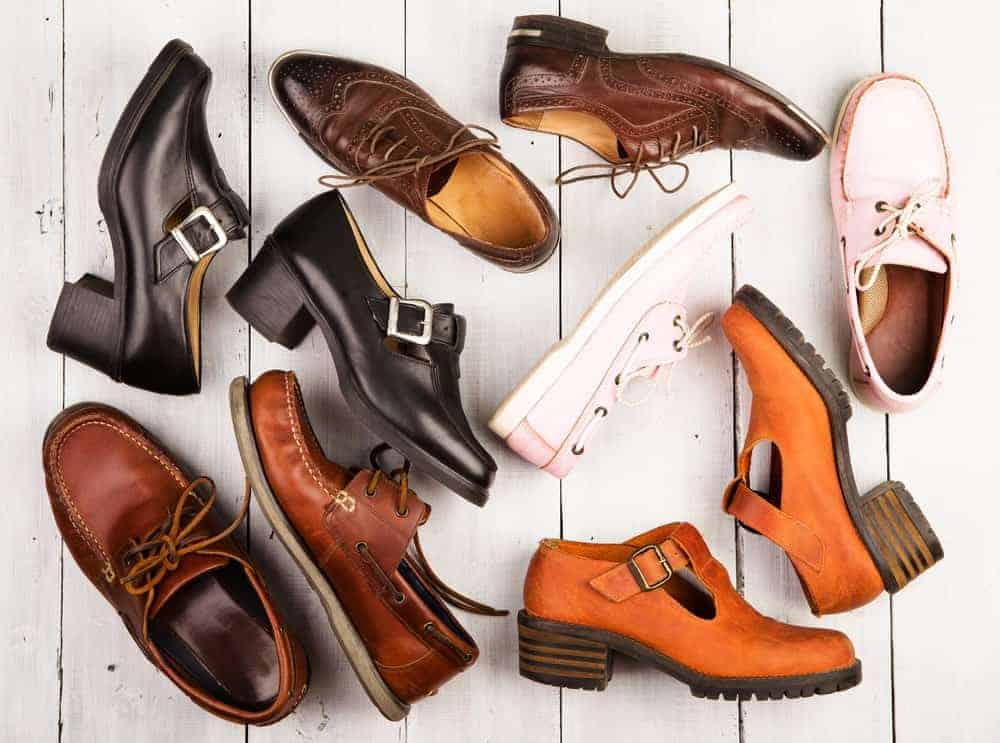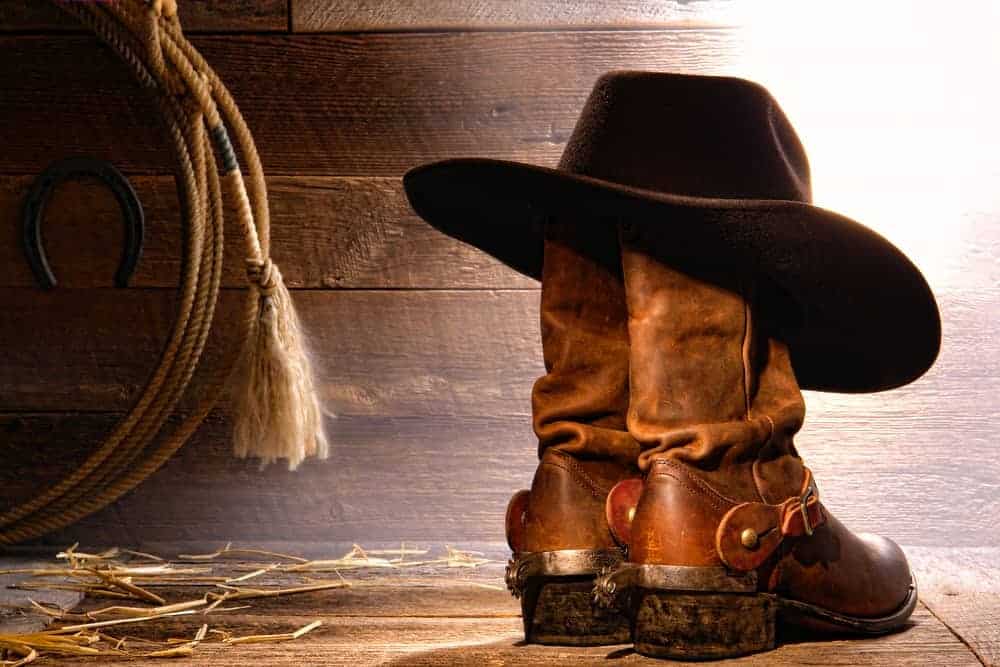Discover all the different types of boots for women and men. Casual, dress, functional, outdoor, rugged, stylish, heels, no heels and more.
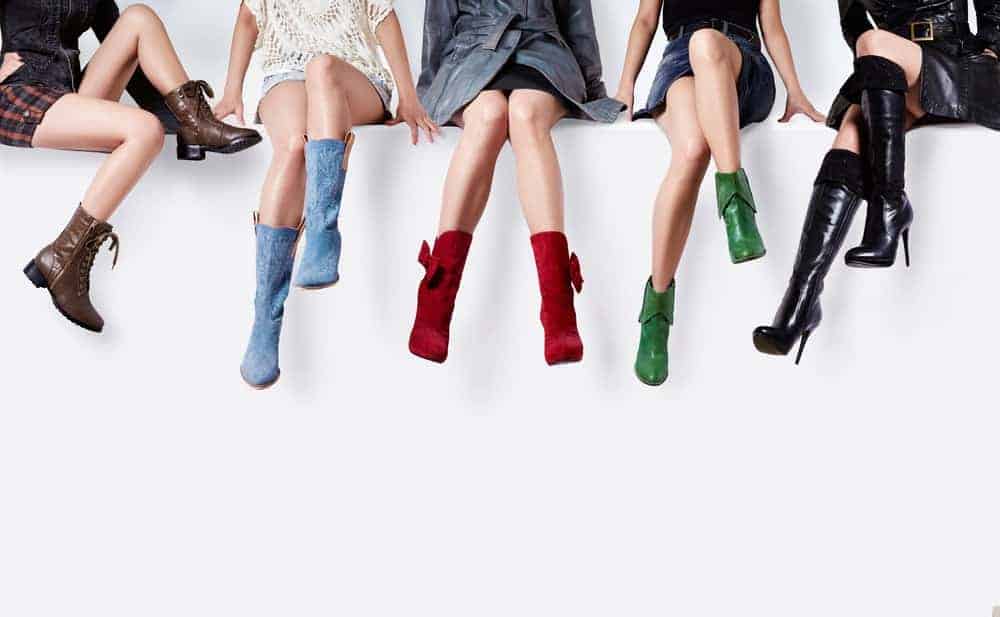
Boots have been a part of fashion pretty much since clothing existed. They were one of the very first types of footwear ever created and they’ve had thousands of years to evolve and change. Over time, lots of different types of boots have emerged on the style scene. How many of them have you worn?
Contents
A brief history of boots
Let’s keep it short: boots date back to 15,000 B.C.E. They were first seen in a painting where a man wearing boots made of skin and a woman wearing boots made of fur were standing side by side. Boots were even featured on Khnumhotep’s Tomb in 2,140 B.C.E.
One highly detailed painting of boots dates back to 1,000 B.C.E, where the Scythians in southern Siberia wore simple boots made of leather with fur leg coverings. The boots were lashed by a thin thong of leather.
It wasn’t until about 3000 B.C.E. that the Minoans turned boot-making into a skilled trade.
The purpose of wearing boots was to protect the feet and legs. However, even from the earliest days, boots were a bit of a fashion statement. Boots that are well-made and crafted out of finer materials speak of wealth and status.
Types of Boots for Men and Women
Many boot styles are worn by both men and women and look equally stylish on both.
Chelsea
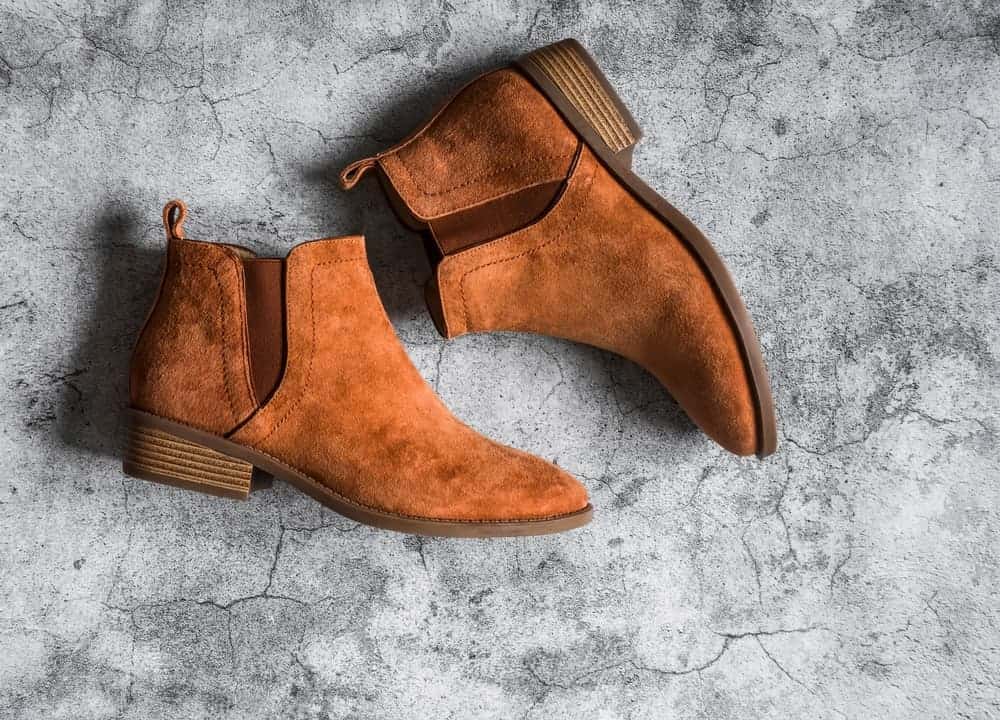
Chelsea boots are named for the Chelsea neighborhood in London. In the 1950s, Chelsea was the coolest neighborhood in the city. It was a mecca for young musicians, artists, writers, actors and socialites. The low-cut boots worn by these cool individuals came to be known as Chelsea boots, since they were so frequently seen in the neighborhood.
History
Though they came to fame in the 1950s, the Chelsea boot style actually dates to the 1850s. Queen Victoria started wearing elastic-sided boots on a daily basis after they were created by the royal cordwainer, Queen Victoria’s personal bootmaker J. Sparkes Hall, in 1851. They were known as paddock boots.
About a century later, four pairs of paddock boots were made by Anello & Davide for an up-and-coming rock and roll band: the Beatles. Other rockers soon copied the look and the Chelsea boot became the hot style for youth in England and around the world.
Style
Chelsea boot styles go up just over the ankle in a smooth, lace-free design with slightly pointed toes, slightly raised heels and elastic sides.
Laceless Chelsea boots suit both formal and casual attire. Men can style Chelsea boots with a sleek, smart suit, making the entire look appear utterly in sync. For example, if you are rocking a blue-tailored suit, go with dark brown leather Chelsea boot styles. The combination of blue and brown together is stylish and sexy.
For a more casual style, invest in suede Chelsea boots. Most suede boots are available in brown and black shades. Keep in mind that black suede boots make for a classic urban outfit, while brown ones give off charming country-style vibes.
When it comes to women, the style choices for Chelsea boots are everywhere. The good thing about these boots is that they look good with every apparel style, from jeans to chinos to smart suits.
Cowboy
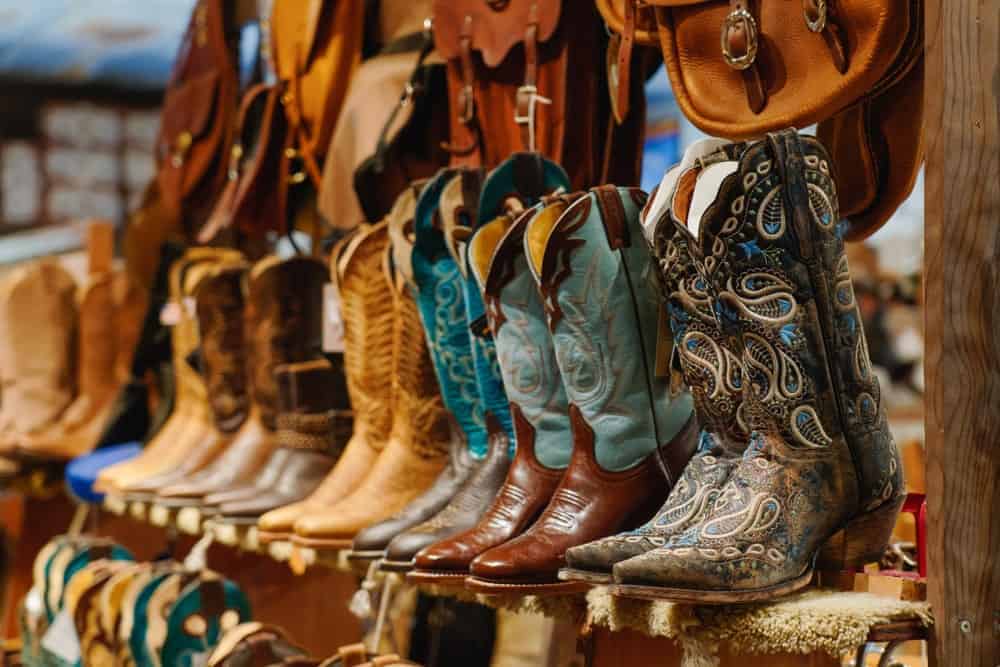
The cowboy boot is definitely one of the most recognizable types of boots. You know it immediately when you see a cowboy boot.
From country singers to Hollywood stars to fashion bloggers and the general public, everyone has, at one point or the other, flaunted cowboy boots. Needless to say, these epic boots are a wardrobe staple and a great addition to the closet of any trendy person out there.
The first cowboy boots were introduced in the plains of the U.S. in the 1800s. However, the roots of this particular boot go back much further than that.
History
Cowboy boots were inspired by the vaquero boots that were brought to the Americas from Spain. The style came to the country in the 1600s with early settlers.
Style
Cowboy boots were created to be suitable for riding horses. They are calf-high and designed to keep feet in stirrups while riding. That’s why cowboy boots have slight heels that are angled, which keeps the soles of the boots from slipping out of the stirrups.
Cowboy boots are laceless but often have highly embellished designs. The distinct features of cowboy boots are the pointed toes and the slightly curved leg openings that give cowboy boots their distinct profile.
Variation
You probably know that cowboy boots come in many kinds of designs, offering a unique style for everybody. The most common style is the classic cowboy boot, which is traditionally made with a 12-inch high shaft and a Cuban-style heel that is angled toward the inside of the boot
Roper boots are a variation of cowboy boots that have shorter sides and a lower heel than the traditional cowboy boot profile. The roper boot design made it easier for rodeo riders, who had to dismount quickly and run on foot during events.
Drysuit boots
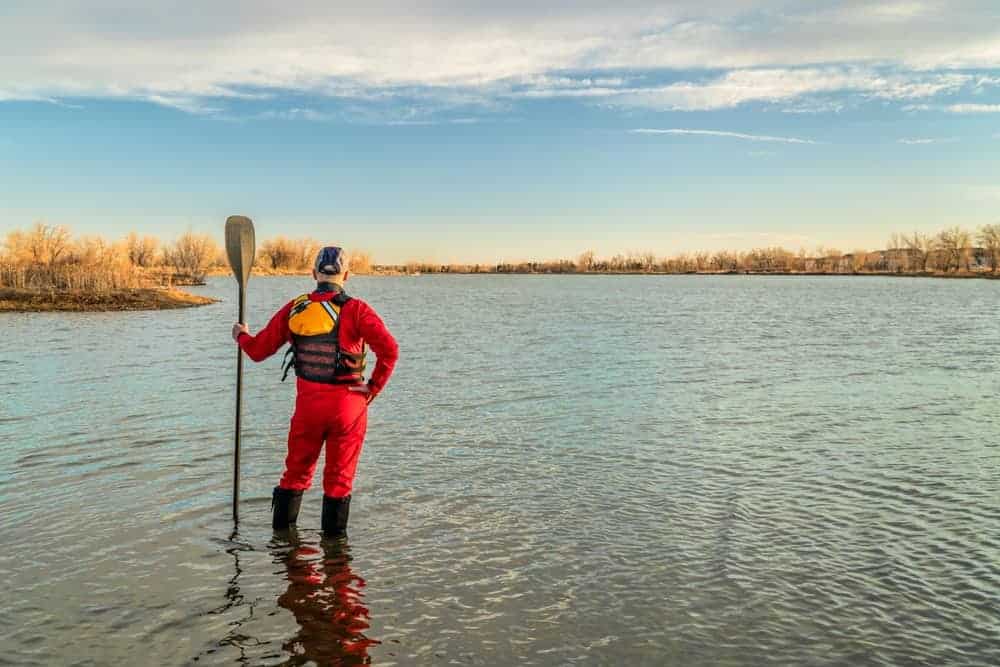
Drysuit boots are worn by divers and others who work in and on the water, such as fishermen. These are rubber booties that are designed to slip right over the feet and ankles. This allows them to be worn inside other boots.
Modern drysuit boots are made in a huge variety of styles that resemble other types of footwear and are now often worn as stand-alone footwear, rather than as booties or a layer of protection under other pairs of boots.
Galoshes
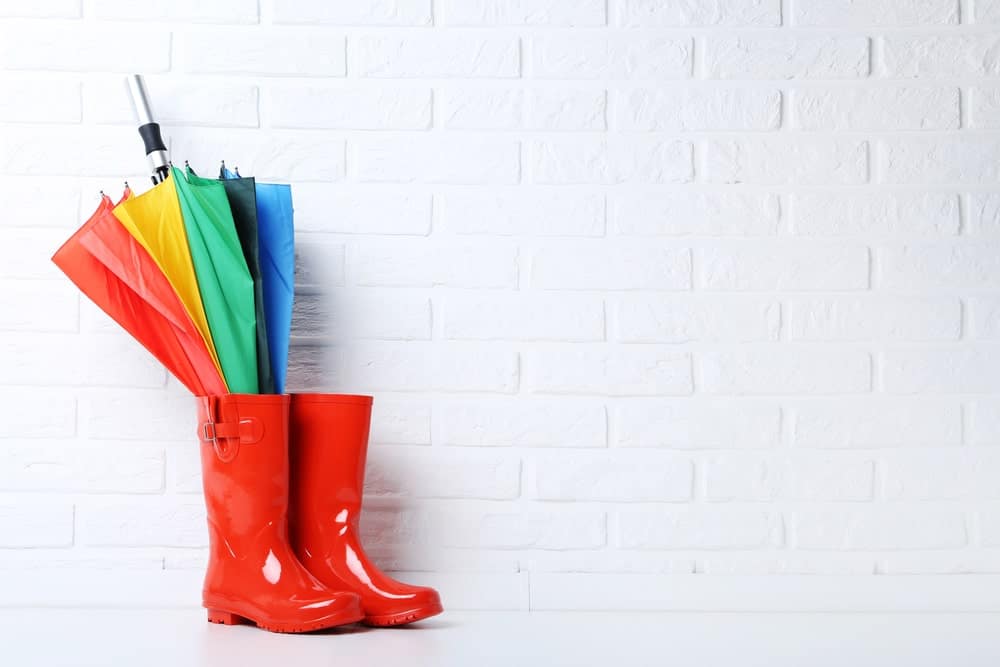
Galoshes are one of the oldest types of boots on the list because they were one of the first types of boots ever created. The word itself dates to the Middle Ages but the design is at least 4,000 years old.
History
Galoshes began when leggings were wrapped around the legs, above moccasins, to provide weather protection. Weatherproof boots were perfected in North America by the Inuit, who used polar bear fur to create footwear.
Style
Over the years, galoshes have become simple overshoes made with waterproof materials, usually rubber. They’re made to be oversized so they can be pulled on over other shoes.
Gumboots
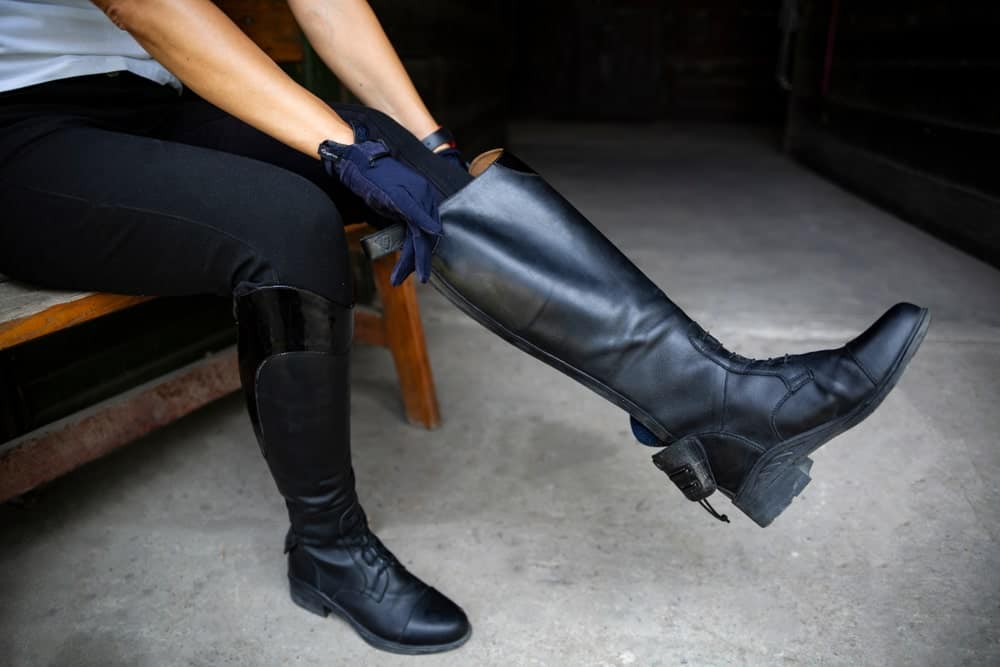
Gumboots are made of rubber…which is a little strange. Why aren’t they just called rubber boots? According to New Zealand Geographic, the name is derived from the Egyptian word kernai, which was adapted to kommi in Greek. This became gummi in Latin, the language used by Rome, which became the word gum in English.
Style
Gumboots are typically high, going up to just under the knee. They have thick soles that are made with a gripping tread. Gumboots are usually used as work boots or weather boots, and they’re oversized so they can be worn over other types of shoes.
Hiking

Hiking became a big trend in the early 1900s. This created the need for hiking boot designs. They were made with all leather back then, even the soles. To give them more traction, the leather sole of the boots was hobnailed. As hiking became popular and boot technology became more advanced, hiking boot and hiking shoe styles became more modern.
History
The introduction of rubber soles changed hiking boots, giving them more traction and eliminating the need for hobnails, according to Heddels. Hiking boots are typically are made in lace-up designs and are usually around ankle-high.
Hip

Also known as waders or fishing boots, hip boots provide protection from watery environments. They keep you dry when you’re wading in water, which is why they’re known as waders. The word itself dates to the 1840s, but waterproof footwear dates to the earliest days of footwear. It wasn’t until the 1960s that more modern wader designs were created.
History
In the 1960s, waders were made out of thick vulcanized rubber. This made them very heavy and not at all breathable, so they were pretty uncomfortable, too.
That’s when neoprene changed the hip boot game. Lighter in weight, this material opened up a world of possibility for wader designs. By the 1980s, waders had become much easier to wear because only a thin layer of neoprene was needed to make them. In the 19090s, the technology got better still and waders became more breathable.
Style
Today, hip boots are available in various lengths. Many styles of waders are actually boots and pants combined into one. They are designed to be pulled on over existing clothing and footwear, rather than serve as a substitute for it.
Jodhpur
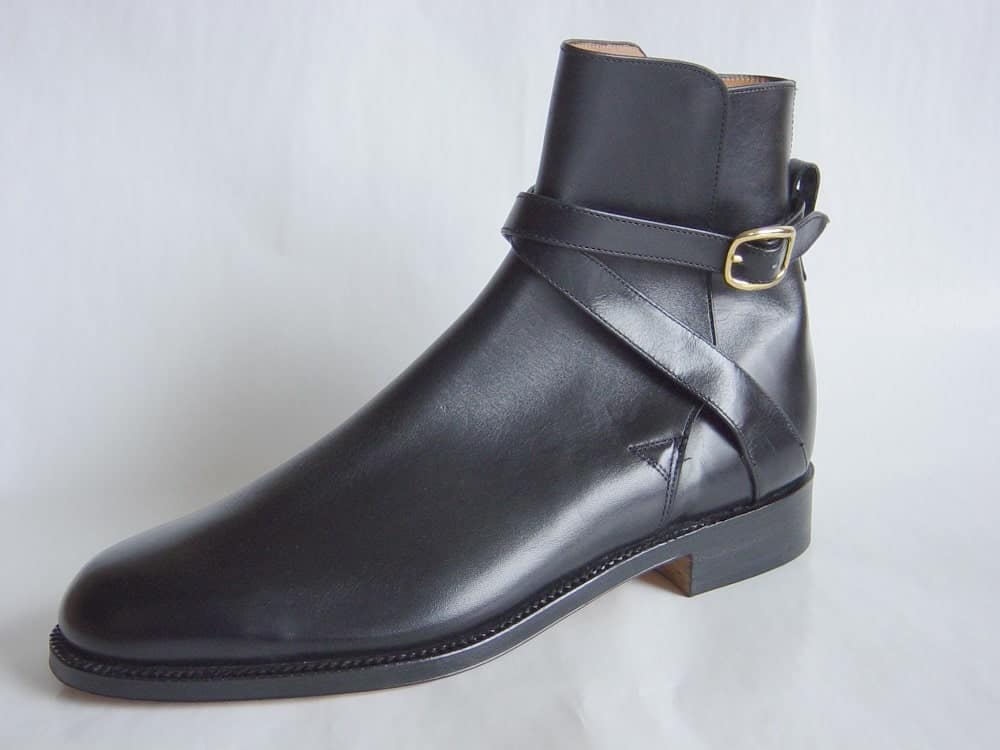
Many boots were created because certain activities needed to be performed. Cowboy boots were invented to make riding horses easier. Hobnail boots made climbing easier. But jodhpur boots are different. These boots were created to match a style of pants that were created first.
History
Before jodhpur pants, riding breeches were the common riding attire. And they weren’t all that great, because they didn’t offer any lower leg protection to the rider. This made it necessary to wear tall riding boots. Jodhpur pants changed all of that.
The pants were designed to protect the legs even while on horseback. This allowed for shorter boot styles to be worn. In fact, it left the fashion world with a hole in it. Riders needed shorter boots that were easy to get on and off, something that would look great with the jodhpur pants that were becoming so popular in 1890.
Jodhpur boots were clearly the perfect solution.
Style
Jodhpur boots are ankle-high with rounded toes and low heels. The vamp is sewn to the quarters, so the design requires only two pieces of leather or other material to create. Jodhpur boots have a strap and buckle that wrap around the ankle. In some designs, the strap doesn’t go all the way around the ankle, according to Gentleman’s Gazette.
Mukluks

Mukluks are designed for the harshest cold weather environments. Designed by the Inuit people, mukluks are made with soft hide. The word mukluk comes from the Yupik word maklak, which means “bearded seal.” This animal has historically been used to make a great deal of Inuit clothing, according to the Canadian encyclopedia.
Style
Mukluks are watertight. The seals are made of sealskin. Mukluks have been worn since at least the 1600s, when they were first adopted by European explorers and fur traders. Mukluks are also called kamik.
Russian

Russian valenki are also called Russian boots. These are warm, wool boots that have ancient origins. These boots were made of felt in the earliest days of Russia. Valenki were handmade in Siberia and northern Russia until the 1700s.
Style
Valenki Russian boots have no left or right. They conform to the foot over time as they are worn. Because they’re made of wool, these boots are moisture-wicking and keep skin dry. These boots are made in seamless construction in a simple, straightforward design.
Seaboots

Seaboots, also styled as sea boots, are not made for fashion. These are high, waterproof boots that are worn by fishers and others who spend time on boats or in the water. The boots are referenced in the 1851 book “Moby Dick.”
Ugg

Brian Smith was already a fan of sheepskin boots when he came to California in 1978. Here, he found the Southern California beach culture that he believed suited his boot choices exactly. He created the Ugg brand to bring the style to the new people he was meeting.
Ugg boots are so synonymous with sheepskin boots, the two phrases are considered to be interchangeable. Ugg boots are remarkable for their simple, unadorned style that sits somewhat higher than ankle-length.
Work

Work boots can be many different types of boots. Everything from cowboy boot styles to moc toe styles to just about any other style can be work boots, if they have features that make them strong, comfortable and work-friendly. Work boot designs have either no heels or low heels, sturdy soles and sometimes have safety toes.
Types of Boots for Men
The first boots were created for anyone and everyone to wear out of the materials that were available. They were crudely put together by our standards, lashed together with plant and animal materials and pieced into shape out of rough pieces of hide.
But as bootmaking became more refined and techniques began to develop, many boot styles were created just for men and male occupations. Now, of course, women also wear any boot style they want to. But some types of boots were definitely inspired by and created for the guys. How many of these men’s boot designs have you worn?
Balmoral

Balmoral boots were specifically designed for Prince Albert. Queen Victoria’s beloved husband wanted a walking boot that he could wear on the moors of Balmoral, the Scottish estate used by the royal family. These men’s boots were made in the mid-1800s.
Style
The Balmoral boot is designed with a closed lacing system, a distinct seam that runs parallel to the ground, a low heel and round toes. This boot style goes up over the ankle and it’s made with leather soles.
Caulk
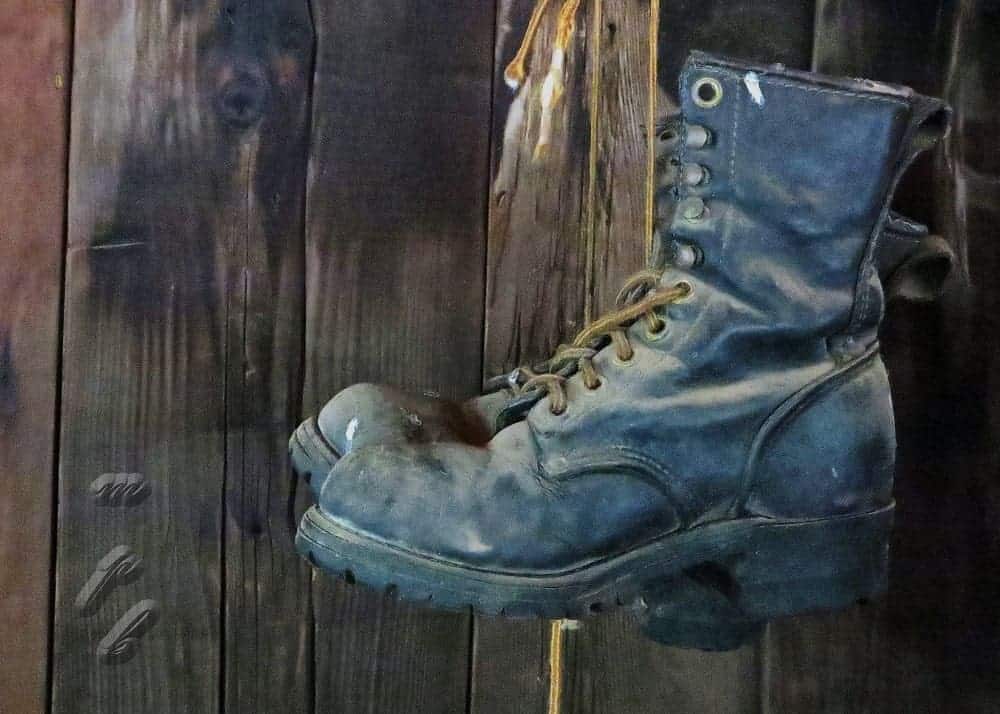
Caulk boots, also known as caulked boots, calk boots and cork boots, are worn by loggers. The soles of these boots have metal studs in them, cleats, that allows for traction on logs, hillsides, ice and snow. Logger boots are usually 8 to 10 inches high and typically made in a lace-up design.
Cavalry Jackboots
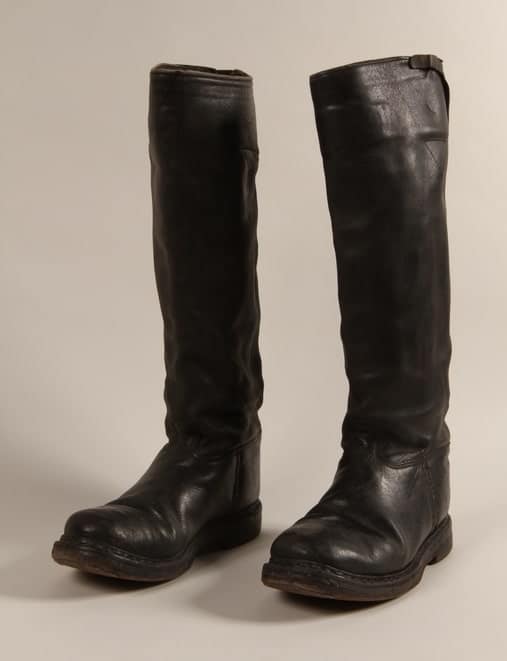
Sometimes referred to simply as jackboots, cavalry jackboots are very high boots that go up above the knee. These boots first came into use in the 1600s, when they were worn by cavalry soldiers. These men’s boots are perhaps most infamous for being worn by the German military in the 1940s while the Nazis were in power.
Chukka
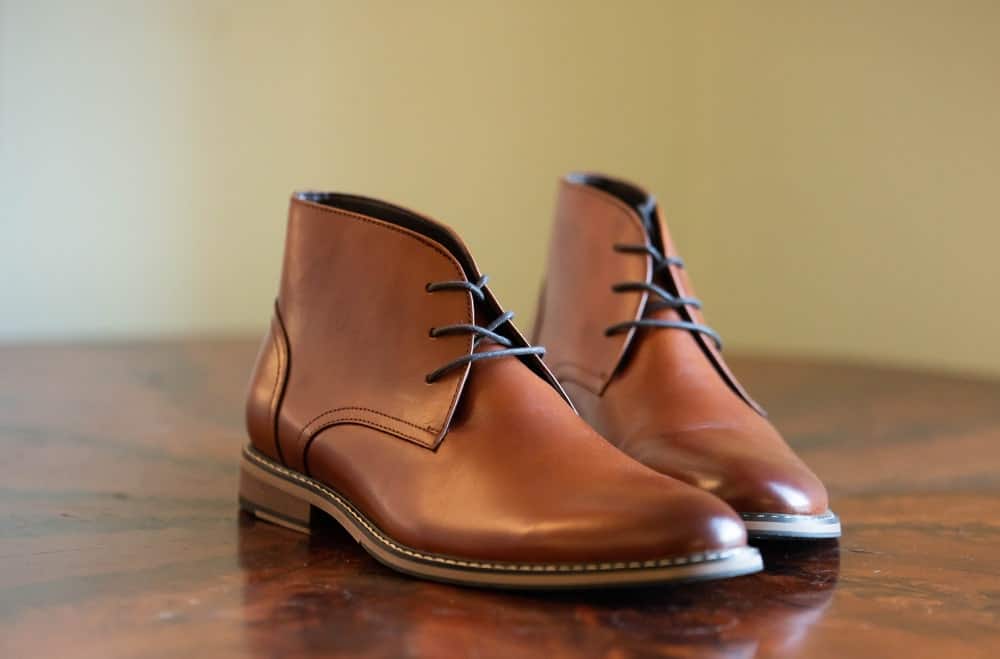
There is some debate about whether or not the chukka is a shoe or a boot. The truth is, it’s a little bit of both. The chukka is a low-cut boot that sits right at the ankles in a simple, highly versatile design. And like many boot styles, it has a military history.
History
It was during WWII that Nathan Clark, of Clarks’ shoes, noticed that British officers serving in Egypt had a preference for low-cut, simple boots. Clark launched a line of the boots for everyone to wear in 1950 and the chukka boot quickly took off as a trendy boot style, according to the Rake.
But the question is, where did the British officers get these boots? The exact origins of the chukka boot are a little murky. Some say that the king trendsetter himself, the Duke of Windsor, wore them in 1924. The Duke, who was Edward VIII before he abdicated the throne, was a famous fashion icon in the early 1900s.
Others say that the British officers had their own chukka boots specially made at the Old Bazaar in Cairo. It was based on a style that was worn in the area for centuries.
No matter where the chukka boots came from, they exploded into popularity in the 1960s and became one of the most popular boot styles of the day.
Style
Ankle-high chukka boots are made with a three-eyelet lacing system. They’re unlined and made to be simple and sleek. Chukkas are usually lightweight boots that can be worn in hot weather.
Combat

Combat boots are one of the oldest boot styles in fashion because people have been making war for a long time. According to the Y Fashion House, the history of combat boots dates to the ancient Assyrian Empire, when soldiers were issued a standard pair of boots with hobnail soles. The more modern combat boot styles that most people are more familiar with, however, date to the 1700s and to a general who truly took the world by storm: Napoleon.
History
The combat boots that soldiers in Napoleon’s army used were a lace-up style that extended up past the ankle, much like the boots worn by soldiers today. After WWII, overstock military men’s boots issued by the U.S. Armed Forces made their way into civilian clothing stores and soon became a part of pop fashion. In the 1960s, combat boots were worn as an anti-war statement, which is sort of ironic.
Variations
The U.S. military has developed many types of combat boot designs to suit different environments.
Mountain combat boots were given to soldiers in Afghanistan.
Tanker boots are a type of military boot that has straps instead of laces. The lack of laces makes it safer to operate tankers. These military boots have become highly trendy in pop fashion.
Desert
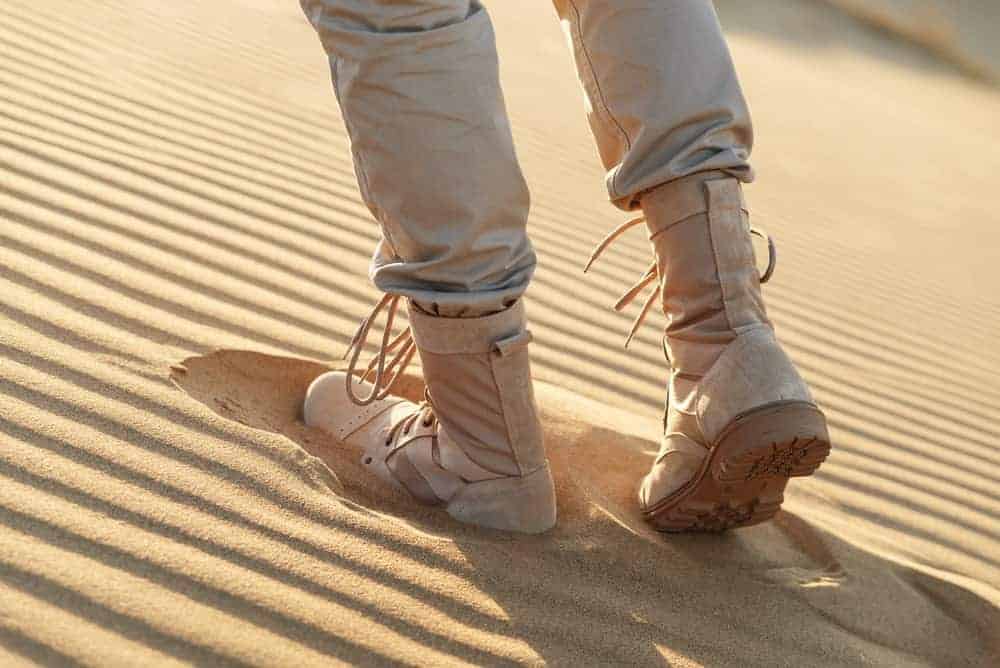
Desert boots are lightweight and comfortable, a boot that has become stylish as everyday wear. These boots were created by a famous shoe designer who helped design more than one type of boot that has become timeless.
History
Nathan Clark was stationed in Burma in 1941 as a soldier in the British Army. A shoe designer at heart, he noticed many of the officers in his unit wearing lightweight, comfortable ankle boot styles while off duty.
He found that the boots came from the Cairo bazaar and were made by special request for the British soldiers because their standard-issue boots were not suitable for the desert, according to He Spoke Style. Clark made his own prototype of the boots using newspaper and sent them to England, where his family ran a shoe business.
When he got back to England at the end of WWII, Clark began playing with the desert boot design. He settled on lightweight crepe rubber for the sole and stiff leather for the uppers. When he unveiled the desert boot design at the 1949 Chicago Shoe Fair, it made a huge impression. Newspapers raved about the design and Clark’s desert boots were propelled to fashion fame.
Style
Desert boots are ankle-high with a lace-up design. The uppers are made in soft suede and the soles are crepe rubber. Desert boot designs are typically light tan in color and have a simple style.
Duck

Duck boots were created in 1911 by a man named Leon Leonwood Bean, who would become famously known as L.L. Bean.
History
Mr. Bean was a man who enjoyed hunting for game. He did not enjoy having wet feet while he was out in the fields scouting. He created the first duck boots by stitching the bottom of a rubber boot to the top of a leather work boot, according to the Manual.
The hybrid boots he created looked a little strange. He originally named them Maine hiking shoes. Known as duck boots, they were worn by hunters and others who wanted dry feet while enjoying the great outdoors.
Style
Now offered by many different companies, duck boots have rubber bottoms that cover most of the foot that are visibly stitched to leather uppers that extend past the ankle. These boots have a lace-up design with sturdy soles and may be marketed as hunting boot styles.
Engineer

The engineer boot is not so much a stand-alone type of boot as it is a marriage between two different types of boots. The engineer boot is what you get when you mix the simple elegance of riding boots with the more practical style of a logger boot.
Style
The engineer boot has a long, sleek length with a stovepipe calf design that can go all the way up to the knee in some designs. It has a slight heel and a buckle at the ankle. Sometimes, there is an additional buckle around the top of the boot.
History
Engineer boots first appeared during the Great Depression in the 1930s, according to Heddels. They were developed originally for railroad workers. The tall height of the boots protected legs from hot embers used to keep the trains chugging along.
Engineer boots caught on with motorcycle enthusiasts in the 1950s, cementing their status as iconic footwear. Stars like James Dean and Marlon Brando were seen wearing them and soon, every teenager in the U.S. had to have a pair of their own engineer boots. Because of the association with motorcycle culture, engineer boots are also called motorcycle boots and biker boots.
Harness
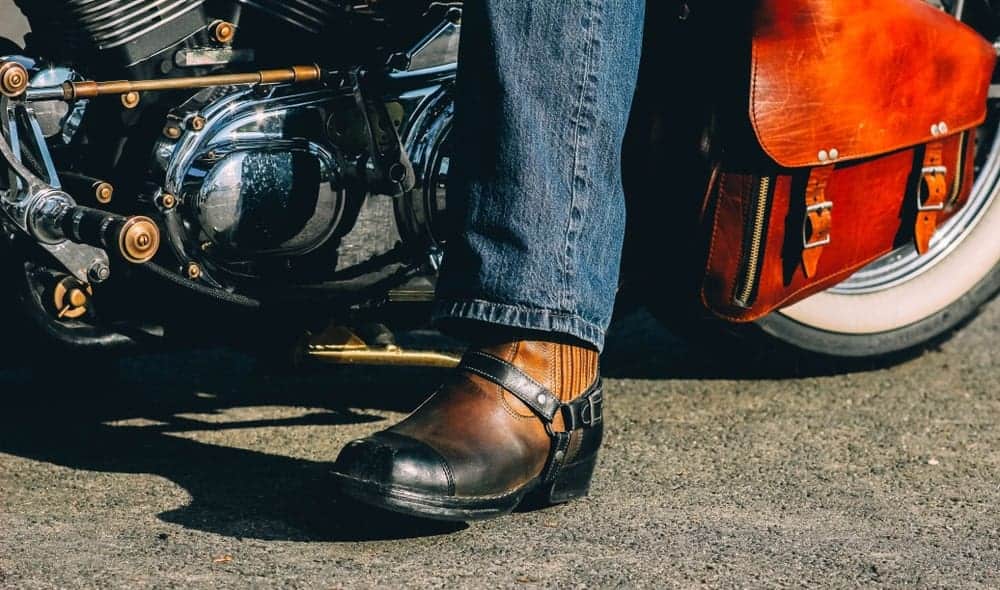
Harness boots are a popular look with motorcycle riders and motorcycle boot enthusiasts. Harness boots are usually made with heavyweight leather and range from 10 to 38 inches in height. The most notable feature of these boots is the ankle strap that’s connected with a ring. This is the harness that gives the boot its name.
History
The first harness boots were modeled on the square-toed boots that were commonly worn by soldiers during the Civil War. The harness was added in the 1950s, which created the modern style of these boots and turned them into a popular motorcycle boot look.
Hessian
Hessian boots were made in Hess, a state in Germany. The boots first appeared in the 1700s. They were crafted with polished leather and designed with a pointed toe, slight heels and decorative tassels. Hessian boots were about knee-high.
Hobnail
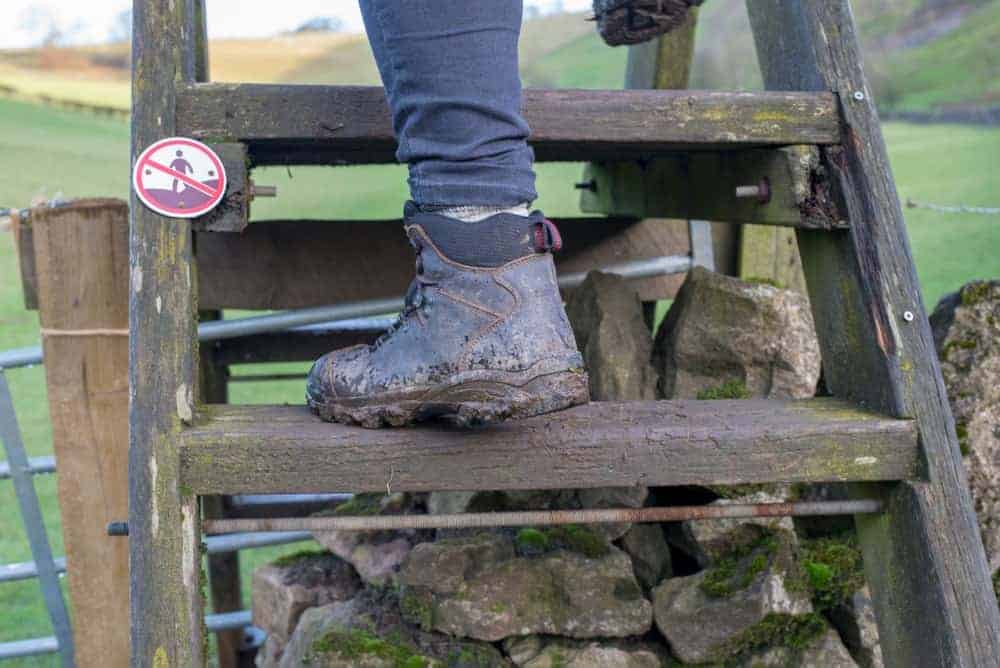
They’re mentioned in a Beatles song lyric so they must be pretty great. What makes hobnail boots special enough to be recognized by the Fab Four?
History
The first hobnail boots were really a DIY project, according to the American Pine Club. Mountaineering boots were originally made completely of leather and they didn’t have enough traction. Climbers had to use hammers to pound their own nails into the soles, giving the boots the traction they needed. That’s why these boots are also known as climbing boots and alpine climbing boots.
Hobnails were used in many types of early boots but it was climbing boots that truly make hobnail boots an important part of fashion history…so important, in fact, that even the Beatles sang about them!
Jump

Also known as paratrooper boots, jump boots were designed for soldiers during WWII, according to QM Fashion. They were designed by Lt. Col. Yarborough. He made the boots with extra support around the ankles, to help provide cushioning against parachute jump landings. They were calf-length and made with leather. The boots became popular with other soldiers as well.
Jungle
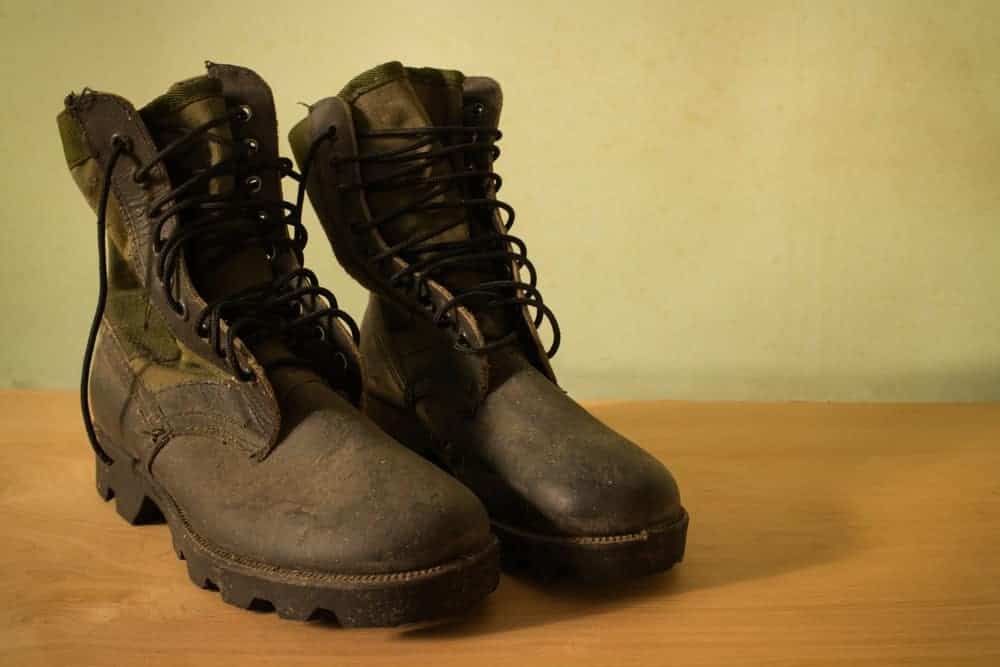
Though the military’s jungle boot is synonymous with the Vietnam War, the U.S. military actually developed a jungle boot as early as 1942. The boot was needed for the Pacific Theater during WWII. The boot was lightweight, quick-drying and durable. The first jungle boots were made with a canvas duck upper and corrugated rubber soles.
Moc toe
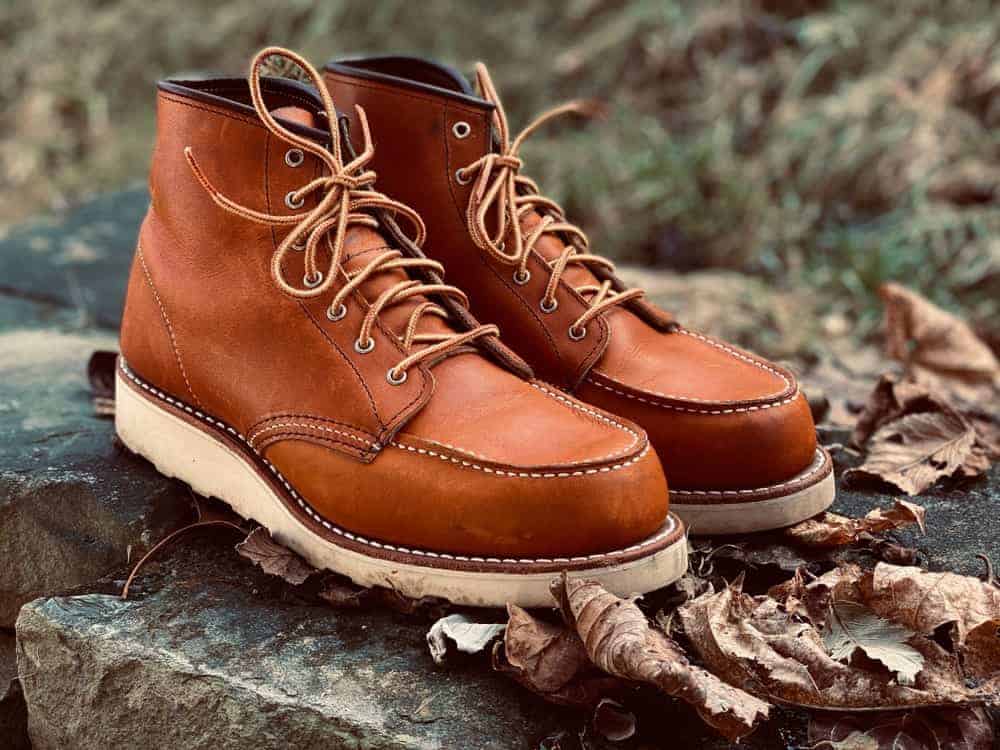
Moc toe boots have visible stitching around the rounded toes, which gives them a look that resembles moccasins. Red Wing first created the moc toe boot design in the 1950s.
The moc toe boot look was very different from other boots on the market. Made with rubber soles and tall shafts, moc toe boots became popular with farmers, hunters and other outdoorsy types. This is still a popular hunting boot.
Rain
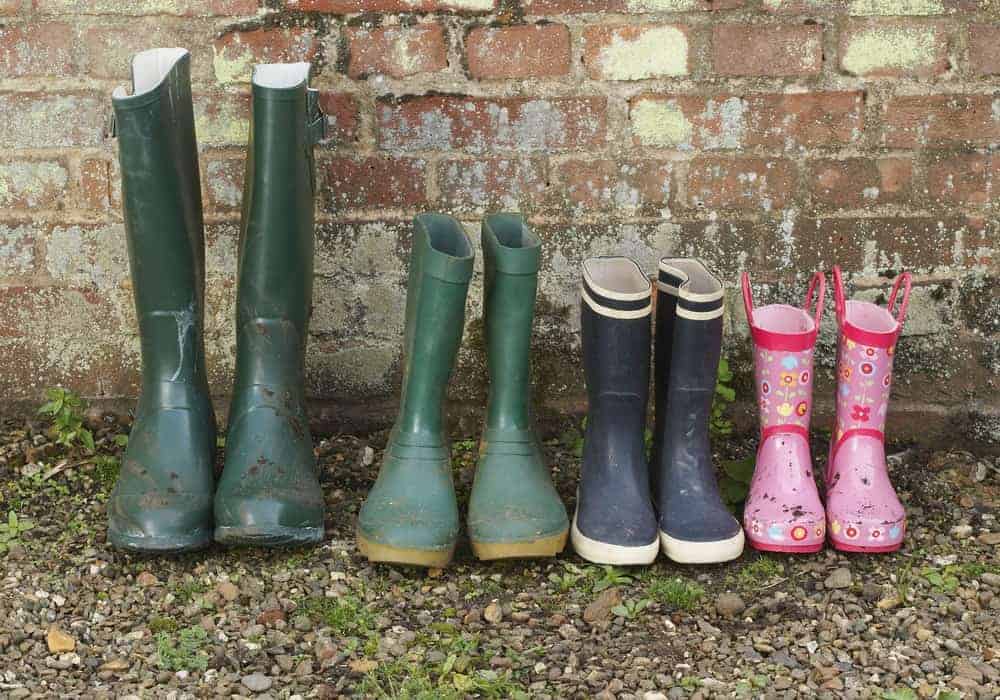
Modern rain boots were first worn by Arthur Wellesley, the Duke of Wellington. In the early 1800s, Wellesley had standard-issue military Hessian boots modified to create simple boots that fit around the leg. Short heels finished off the boots. They were known as Wellington boots, also known as Wellies.
Style
Over the years, Wellingtons have become watertight rubber boots made in a simple, streamlined design. These boots are still made to fit close to the legs and may or may not have heels. Rain boot designs are made in a variety of colors. Vivid yellow is a popular shade.
Riding

Modern riding boot styles emerged on the style scene in the 1600s. These were tall boot designs worn by soldiers who rode into battle on horseback. These early boots were made of leather in a smooth, elegant design.
Variations
There are some variations of riding boots, including dress boots. Also called dressage boots, these boots are tall and laceless. This variation of riding boots is often worn by dressage riders. Hunt boots and top boots are both variations of dress boot designs.
Field boots are tall boot styles that have laces. These are most commonly worn for jumping horseback events.
Rigger
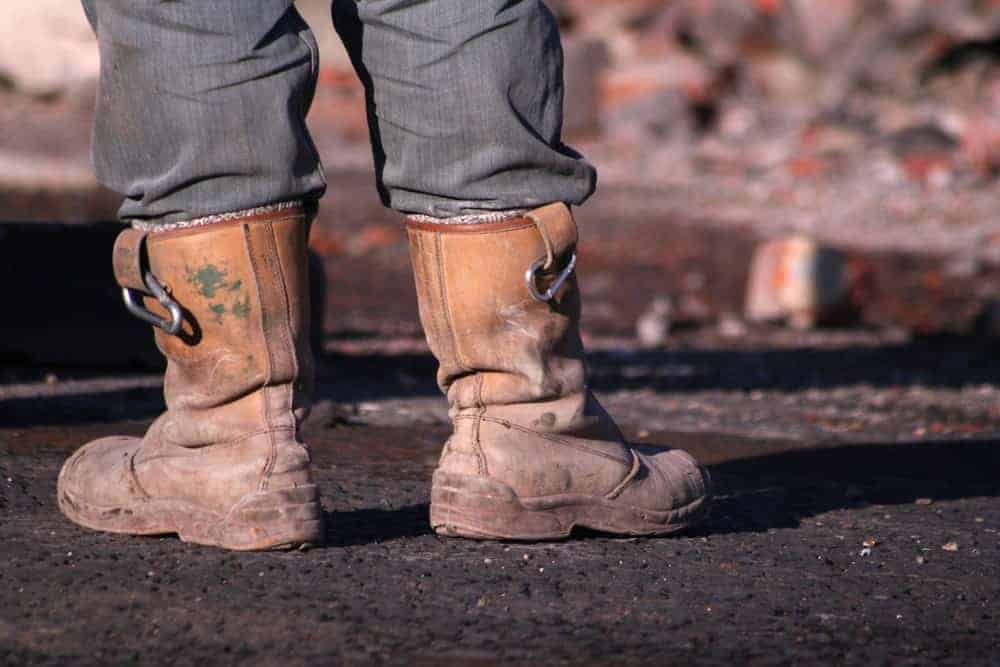
Rigger boots are a type of safety boot that was worn by workers on oil rigs. This is where the name “rigger” comes from. Riggers are a common work boot style across many different industries today.
Style
Usually tan in color, rigger boots are calf-length and have steel toe caps. Riggers are a pull-on style, so they also have loops at the tops of the boots. These boots are somewhat loose-fitting so they can be easily pulled on and off.
Service

Service boots are sort of a spin-off of military boots. These boots actually began as civilian wear and were later adopted by the military. It all began with a Canadian shoemaker in the 1930s.
History
Edward Viberg started the Viberg company in Canada in 1931. His business was selling boots for farmers and others who needed hard-wearing bots. Viberg’s first boot was the prototype of the service boot: a military-style, ankle-high design.
Viberg boots caught on with loggers in the 1940s, when the company moved to British Columbia. Now, the service boot is a well-known look that was adopted by the U.S. military in the 1940s. Service boots were issued by the Army in 1943.
Style
Service boots are ankle-high boots with round toes and a slight heel. They resemble military boots with the same style of lace-up front and the same construction.
Steel-toe
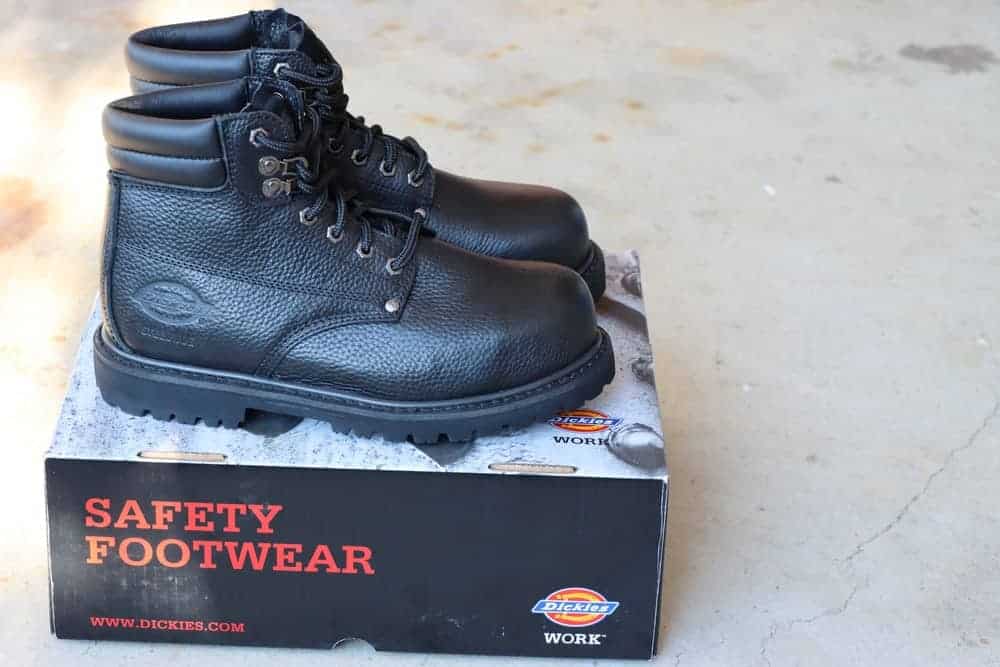
Industrial safety became a bigger concern toward the end of WWII. The first steel toe boot designs were made in Germany for factory workers. Soon, the steel toes were added to German military boots as well. Steel toe boot styles are also called steel-toe boots and safety boots.
History
Red Wing created their own line of these boots. Soon, many other boot makers introduced their own steel toe boots. In modern designs, protective toe caps are made with many other materials other than steel, including composite and aluminum.
Trench
In the early years of WWI, U.S. soldiers quickly found that they had a footwear problem. The Russet marching shoes that were standard-issue at the time could not withstand the French terrain. Soldiers began to develop trench foot. This was no good, so one general rose to the challenge.
History
General John Pershing approved changes to the Russet marching shoe. A triple-thick sole with iron toe cleats was added, along with leather construction and waterproofing. This was called the trench boot, though it was also called the Pershing boot.
Types of Boots for Women
Many types of boots have been created just for women’s fashion. The different women’s boot styles show how diverse this footwear can be.
Ankle

Ankle boots are often seen in fashionable styles for women with heeled or heelless designs. But the first ankle boot designs were worn by men in the 1700s. Ankle-high boots became popular with laborers first but then the style caught on as sporting boots. Heeled ankle boot styles for women became popular in the mid-1800s. These boots are also known as shooties, a combination of the words shoes and boots.
Go-Go

Go-go boots were definitely the look to have in the 1960s. Usually made with vinyl, go-go boots were often styled in bright colors. They were made in zip-up, lace-up and pull-on designs and were finished with many different types of heels. Go-go boots are usually around knee-high.
History
The tall, eye-catching boots that became popular at the discos became known as go-go boots because of the Whiskey a Go-Go, a California club that opened in 1963. The Whiskey a Go-Go became known for young female dancers who performed in cages suspended from the dance floor. They became known as go-go dancers.
The first go-go boots were designed in 1964 by French designer Andre Courreges.
Open Toe
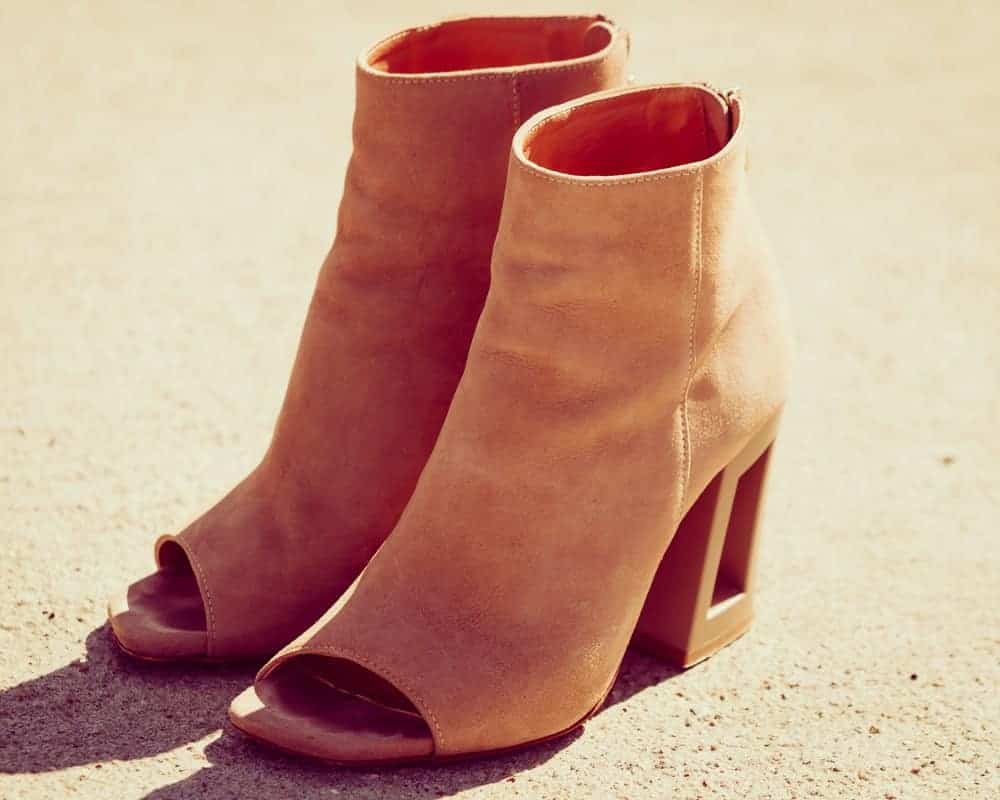
Open toe boots, or peep toe boots, can be made in an array of different styles. Open toe boots are a chic way to dress for fall or to wear winter looks in warm climates. Open toe shoe styles date to the Depression and have never totally disappeared from the fashion scene.
Platform

Platform boots appeared in China in the 1700s, when they were worn by actors on stage. Many types of boots can be made with platform soles. This is a popular look today in women’s boot designs.
Sock
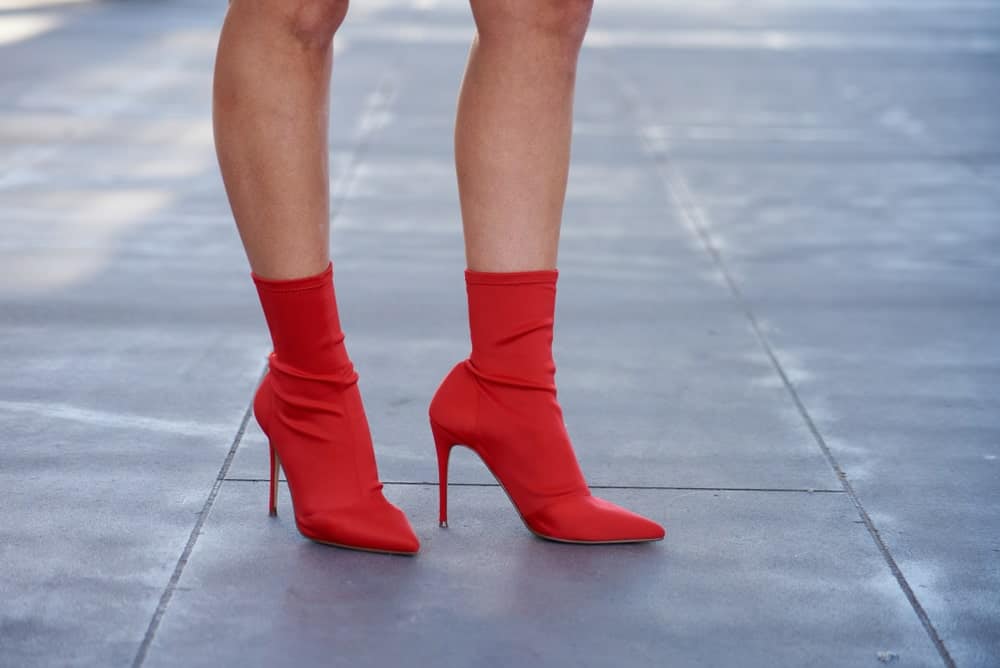
Sock boots are a newcomer on the fashion scene and they are super trendy with modern fashionistas. These are boots with high, skinny heels and pointed toe designs that are covered with fabric, which extends up past the ankle to mid-calf.
Thigh-high

Boots that extend up past the knee, thigh-high boots, are a fashion staple for women. However, these boots were first worn by men in the 1400s. This style of boots was considered highly inappropriate for women. Joan of Arc was accused of wearing these boots in 1431.
Now, thigh-high boots are typically worn by women. These boots usually have a heeled design and come in a huge variety of colors and materials. They’re a perfect pair for skinny jeans.
Wide Calf

Wide calf boots are tall women’s boot designs that may or may not have heels. These boots are made to be wide through the calf area, which can be a more comfortable fit for some.
Other Types of Boots
Some boots are made specifically for certain sports or activities and are only worn for a single purpose, never making the leap into popular fashion.
Calcei boots were worn by Roman soldiers in the first century. They were a far different design from the Roman caligae shoes that Roman soldiers had worn previously. These shoes were essentially leather sandals with straps that wrapped around the legs. Calcei boots covered the entire foot and were made with both inner and outer soles.
Motocross boots are made specifically for motocross racing under strict specifications to provide safety.
Postillion boots were big, heavy boots made with leather and iron. These boots were worn by the postillion, the person who rode one of the two horses used to pull a coach. This was a dangerous job, as a leg could be caught between the two hoses. The thick, heavy postilion boots protected the legs from danger.

Ski boots are very tough, heavy boots with insulation and waterproofing that keep your feet warm and dry. The first plastic ski boots debuted in the 1960s.
Snowboard boots are a lot like ski boots but they are optimized for snowboarding. These boots extend up over the ankles and they’re made in lace-up designs that provide a customizable fit.
Touring boots are a lightweight version of ski boots, according to Powder Magazine.
Wetsuit boots are used with wetsuits. They’re made to be insulating and waterproof. Though they’re most associated with SCUBA gear, wetsuit boots can also be worn for water sports such as windsurfing, kiteboarding, kayaking, waterskiing and wakeboarding.
Boots Material
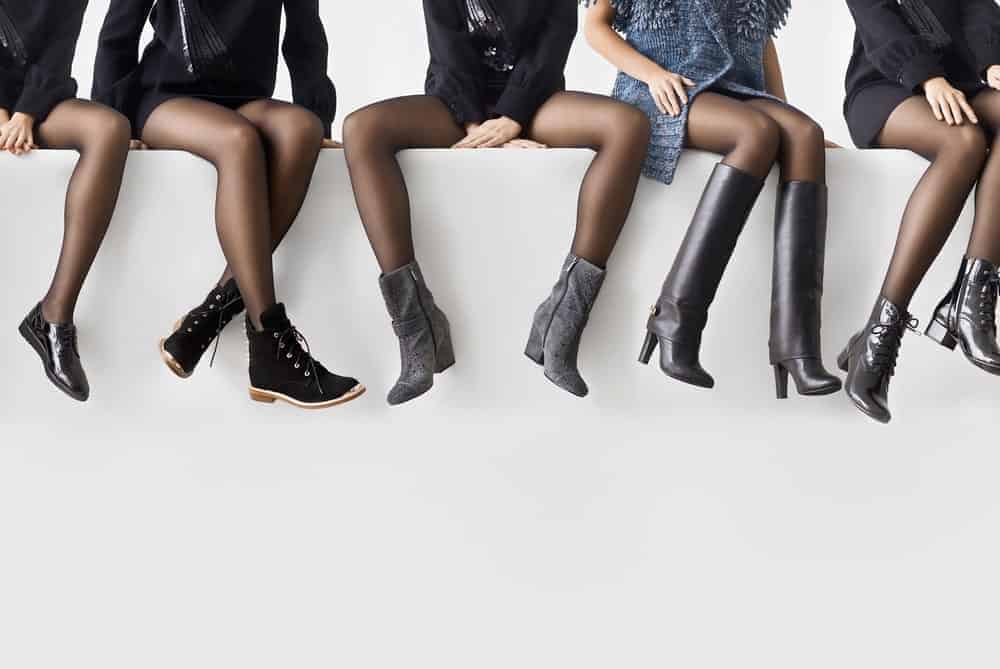
Leather is most likely the first material that was used to make boots and it’s still used to make all sorts of different styles today. But over the years, boots have been made from a huge variety of materials. The soles can be made from anything from rope to rubber to cork, to name just a few. Boot uppers are made from a wide range of materials that determine how the boot looks and feels.
Denim
Denim is one of the best-known fabrics and it’s used to make many different types of boots to create all kinds of styles. Denim is made of cotton in a durable, somewhat thick woven construction. The material is soft, easy to clean and always stylish.
Faux fur
Faux fur boots are hot in the fashion world. They look luxurious and feel warm. Anyone can wear faux fur boots and enjoy them, because they are made from artificial fur and do not involve any cruelty against animals.
Fleece
Fleece is a soft fabric that is made to mimic the warming, insulating properties of wool. Fleece is made from synthetic fabrics, which makes it a vegan- and vegetarian-friendly alternative to wool. Because fleece is so warm and insulting, it is often used to line snow boot styles.
Leather
Leather boot designs are durable, stylish, easy to clean and versatile. Leather is extremely durable material, which is why it’s been used to make boots for thousands of years. Leather is very commonly used to make the upper part of boots. Leather sole construction is also very common in many types of boots.
Nylon
Nylon is known for both its super light weight and breathability. If you are looking for boots that offer these two qualities, go for nylon boots. Nylon is also incredibly durable. It’s hard to rip so it wears well. Nylon can also be dyed in a huge variety of different colors.
Patent Leather
Patent leather is specially-treated leather that is shiny, smooth and stiff. The process of making patent leather has been in use since the early 1800s. Patent leather has been coated in varnish that gives it the skinny, glossy surface. Patent leather is highly water-resistant and has a very eye-catching look.
Polyurethane (PU)
Polyurethane is a synthetic plastic that is highly durable and versatile. PU can be tinted to be any color.
Rubber
Rubber is resistant to chemicals and water. It’s bouncy and tough. Rubber is also stretchy. In other words, it’s a very tough and practical boot material that is often used for waterproof footwear. Rubber is used to make boot uppers that are waterproof and durable but it’s also often used to make boot soles. A boot with a rubber sole will give you good shock-resistance and wearability.
Suede
Suede is a soft and velvety type of leather. Many types of boots are made in suede because it has a beautiful look and it’s a strong, durable material.
Velvet
Velvet is a highly recognizable material and it’s used to make all different types of boots. Velvet boots ooze style and elegance but they are not recommended for rough use. This is because dust and dirt are quick to mark velvet and getting rid of these spots can be a challenging task.
With their sophisticated and refined look, they can be your savior when you are running late for some event and cannot spend too much time carefully picking the right outfit. Wear these boots and you will be turning heads wherever you go.
Wool
Wool is made from the fibers of animal hair. Wool is well-known for coming from sheep but hair is also harvested from goats, camels and alpacas to make wool. This material is insulating and warm. It’s also very soft to the touch.
Wool is used to make boot uppers but it’s also often used to make boot lining to make footwear more winter weather-friendly. This is a common insulator in snow boot styles.
Heel Type

Heel type is a huge consideration when it comes to picking different types of boots to wear. Do you want more support? More style? More height? Heel type has a huge impact on how boots look and feel.
There are many types of heels. Learn which heel types are used most often for boots and you’ll know how to look for the right heels for your feet.
Cuban
Worn by both men and women, Cuban heels typically have a short to medium-high design with a thick, wide heel.
Flared
Flared heels have a slim base which expands in its width towards the bottom half. Flared-heel boots became popular in the 1970s and are still going strong.
Low
Low heels give you a little bit of lift but still provide support. Sometimes, you may need a low, platform-style heel. Chelsea boots are a renowned type of low-heel boot.
Stacked
Stacked heel designs are made to look like different layers of material that have been stacked together. This is seen most often in wooden heels but the stacked heel look can be created with any material.
Stiletto
These boots feature a slim and slender, pencil heel that might be medium-sized or really long. Sleek heeled boots like these go well with various outfits including dresses, trousers, skirts, and many more.
Wedge
Wedge heel boots are the ultimate choice for all the fashionistas who are all about style, comfort and versatility. These are the kinds of boots that can help you pull off any kind of outfit, whether you are wearing them with your favorite shorts, an oversized sweater or with a casual white tee and jeans.
If there is a formal evening to attend anytime soon, you can lean toward glittery wedge boots to make a statement. But if you are not a brave soul, stick to black shiny leather wedge boots. And trust us, they will look just as good!
Wedge soles give you lift without taking away the support. These heels are wedge-shaped and make contact with the floor or ground below you from toe to heel.
Boot Height
Boots can be pretty much any height all along the leg and you can buy boots in any and all heights. But for the most part, boots fall into one of four categories of height.
Ankle
Ankle-high boots are the shortest. They sit either just under the ankle, on the ankle or, most commonly, just above the ankle. There are many ankle-high types of boots in the style world, including classic silhouettes like Chelsea boots, Jodhpur boots and chukka boots.
Calf
Many types of boots are designed to be calf high. Cowboy boots may be the most famous calf high boots but several other designs, including combat boots, also reach calf height.
Knee
Boots that reach the knee are a fashion staple. Many types of boots that go up to the knee have been on the style scene for centuries, from Hessian boots to go-go boots.
Over-the-thigh
Boots can be high enough to go all the way up to the knee and beyond. The tallest boot design is probably waders. Some wader designs go up to the waist or even up to the chest. Over-the-thigh boot designs may also be called thigh-high boot designs.
Boot Definitions and Terminology
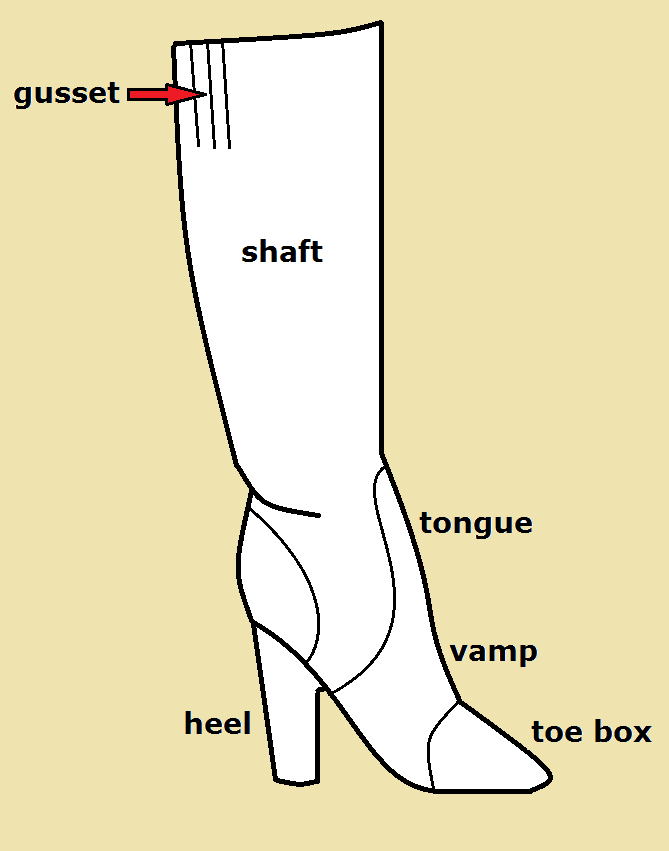
Shoes and boots have many of the same parts. Have a look at the basic parts of a boot.
Brogueing: This is a decorative element that is found on many boots. This process creates tiny holes carved into leather that is purely for the purpose of fashion.
Heel: This is the boot’s back portion that provides elevation. It can be made of different materials.
Insole: This is the thin covering upon which your feet rest.
Pull-Tab: A small leather loop attached at the opening of the boot
so that the wearer can pull the boots on easily.
Shaft: Padding that cushions the Achilles tendon or ankle.
Sole: This is the base of the shoe that is divided into three parts: insole, midsole and outer sole.
Spur Ridge: Mostly found in cowboy boots, this part forms a small ledge that sticks out from the top of the heel. It stops the metal spur from falling onto the heel and helps when dismounting or mounting a horse.
Upper: This is the part of the boot above the sole that contours your feet.
FAQs

There are a lot of types of boots out there and that means there’s a lot to learn about them. You may still have questions about the different types of boots. You aren’t alone. Get the answers to the most common boot questions and get all the knowledge you need to pick great boots, keep them looking amazing and make good style choices.
How many types of boots are there?
Boots have been around for just about as long as humans have been around. That’s a lot of history and a lot of different boots. There are boots made for style, boots made for weather conditions, boots made for specific activities. With such a long history and so many purposes for boots, there are a lot of different types out there. Designers are creating new boots all the time and technology often changes boot designs over time.
Because of the ever-evolving nature of boots, it’s impossible to say at any given moment how many different types there are. It’s enough to say that there are enough types of boots for whatever you want to do. And if you can’t find a pair that suits what you want, create them! Who knows? You may join this long and interesting list of people who designed boots that made it big in fashion history.
What types of boots are in style?
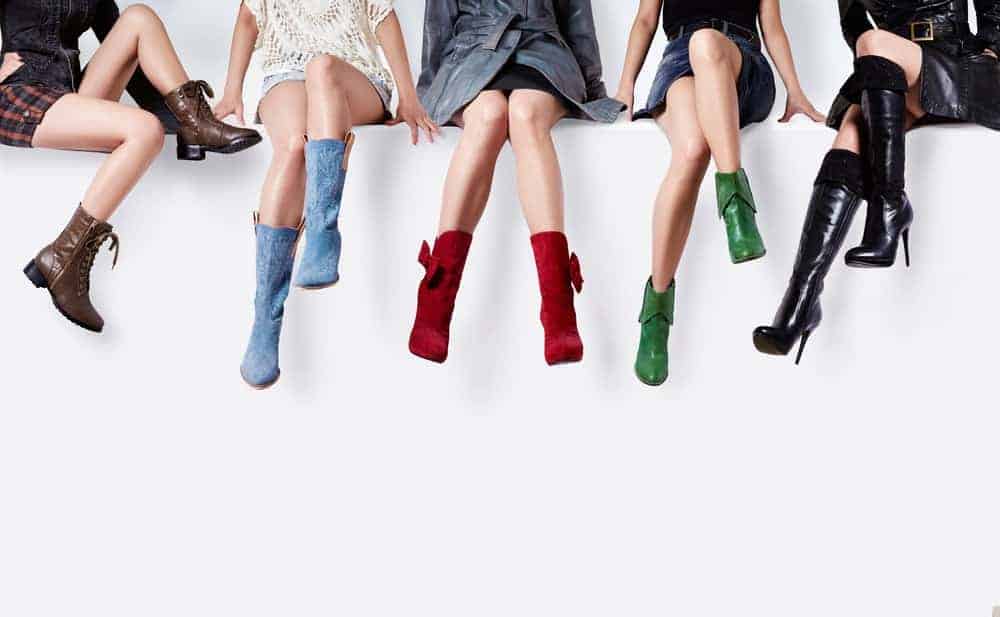
Boots are always a good fashion choice but styles do change over time. Different looks become trendy or not-so-trendy as fashions change. So what looks hot right now?
According to PopSugar, ankle boots and knee-high boots are very on-trend right now. Super high heeled boots are being seen less and less as women opt for more practical styles.
Which types of boots are best for winter?

There are many winter boot designs that are optimized for cold weather and made to take on harsh climate conditions. Duck boots, for example, are designed to help feet beat the rigors of a cold, wet winter. But any type of boot can also prove that it isn’t warm enough. Instead of looking for specific types of winter boot designs to keep your feet warm, look at specific features instead.
Boots with insulation are designed to hold in warmth and keep cold at bay. Boots that are waterproof are made to keep you dry and protected against snow and ice. Boots that have a gripping tread will help you maintain traction even in icy conditions. And fleece lining certainly helps if you’re going to be braving very cold winter conditions.
Look for the right features and you will definitely find the right winter boots.
Can boots shrink?
Under the right conditions, some boots can shrink. Specifically, leather boots can shrink. Some people will shrink their leather boots on purpose in order to get a more form-fitting look. If you don’t want your leather boots to shrink, avoid heat and water, particularly both at once.
To shrink your leather boots on purpose, soak them in water for about an hour unless they’re made of suede. Water will ruin the look of suede. If your boots are made of suede, wet the inside of the boots and allow them to dry naturally. Don’t get them too wet so the water doesn’t seep through and ruin the look of your suede leather anyway.
Once you’ve got your boots wet, put on some wet socks and put on your boots. Wear the boots until your socks dry. You can also shrink your boots using a spray bottle and a hairdryer. Either way, always treat the leather with leather conditioner after it’s been wet.
Other types of boots, such as boots made from plastics, will not shrink.
Can boots go in the dryer?

Wearing wet boots can be bad for your feet. This is something that soldiers learned during WWI. They experienced wet conditions and were issued boots that did not provide enough protection against the moisture, which led to a condition called trench foot. Wet boots can encourage the growth of bacteria…which you totally don’t want on your feet.
Boots can take a long time to air dry on their own. So when you just have to have dry boots, you can put them in the dryer. However, there are many things you need to do before you put your boots in the dryer.
First, make sure your boots are clean. A spot of mud or dirt on the boots can become a stain if you place them in the dryer when they’re aren’t completely clean. Next, remove the laces. Take the laces and secure them to the boots by lacing them through the top two eyelets of the boots. Leave plenty of length in the shoelaces. Do this for both pairs and tie the laces together.
Now, tie the laces to the dryer door. Make sure the boots can still be inside the dryer with the dryer door closed. You must tie the boots to the door because this keeps them from banging around inside the dryer. Not only will this be noisy but it can also cause damage to the dryer.
Keep the dryer on low heat and dry the boots only in very short bursts, no more than five minutes at a time. The dryer will work very quickly to dry your boots so you may not even need the entire five minutes.
It is possible to dry boots in a dryer using this method. It is not recommended. Because the dryer dries the boots so quickly, it can cause cracks and damage to the leather. There are other ways to dry boots, such as using a special boot dryer.
Can boots be resoled?

If you’re super keen on a pair of boots and something happens to the soles, it can be disappointing. But take heart. Boots can be resoled if you want to give them new life. You may want to do this if there is a hole in the sole, if the soles have worn unevenly and now walking is a challenge, if the soles are splitting or if there is significant wear or damage.
Can boots cause back pain?
Some types of footwear can cause back pain because they don’t allow your feet to move naturally while you walk. High heels can be bad for your feet and back if you wear them regularly. Boots with high heels can cause you to feel back pain or foot pain.
Can boots be worn with business casual wear?
There are several types of boots that look sharp and professional. Many boots will suit a business casual look, according to TrendSpotter. Chelsea boots, chukka boots and other low-cut styles look good when paired with the right clothing.
Can boots be stretched?
Leather boots can be stretched if they are too tight. This won’t work for boots made with plastic and other materials, but it is possible to stretch leather. You can always use a boot stretcher to accomplish this feat. You can also try leather stretching spray. Follow the instructions precisely so as not to stain the leather.
How are boots made?
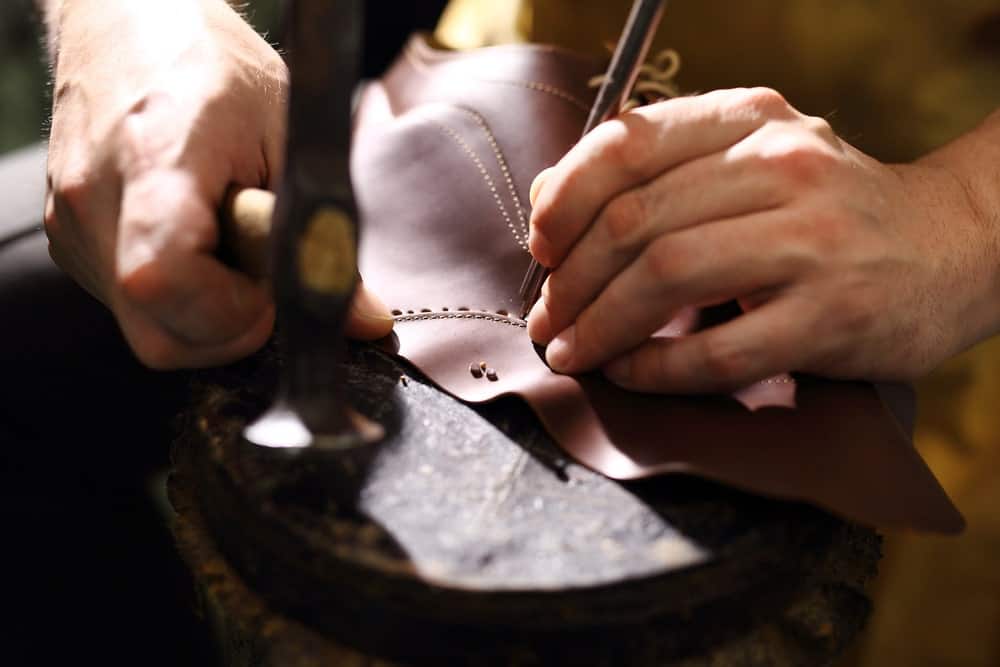
Many boots are made in essentially the same way they have been made for thousands of years. The pieces of material, be it leather or plastic or fabric, are individually cut and then stitched together. Many big boot manufacturers use machines to complete this process but some boots are crafted by hand. Some boots may have quilting or embellishments added. These decorative elements are stitched in place after the material has been cut into pieces.
Once the upper pieces of the boot have been stitched together, the soles are stitched and/or glued into place. The inner pieces of the boot, such as lining, insulation and insoles, are added later. This is an oversimplified version of the process but this is the general idea of how boots are made.
How should boots fit?
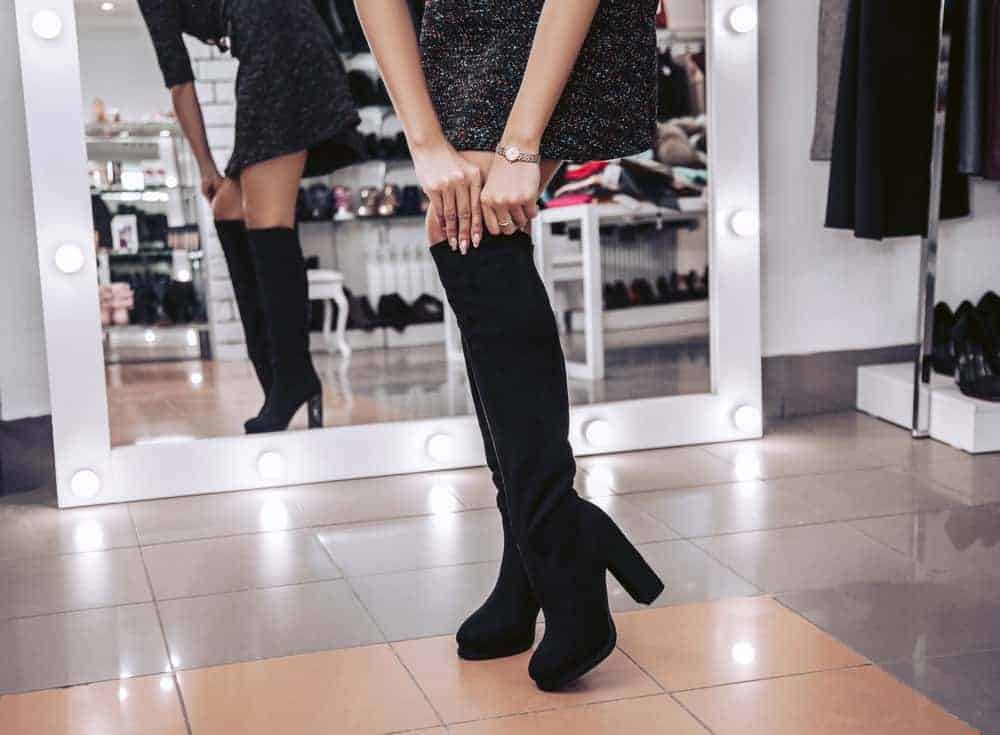
Boots that don’t fit properly aren’t just uncomfortable. They can also cause serious foot problems and even lead to serious issues with your joints and back if you continue to wear boots that aren’t sized properly.
If your feet slide in your boots, whether they move from side to side or forward and backward, the boots are too big. This is actually a big problem. There are many issues that can be caused by boots that are too big. Boots that are too big on your feet can cause corns, which are painful and unattractive. More serious issues that can be caused by too-big boots include damage to ankle ligaments and Achilles tendonitis.
Are your boots too big? If there’s more an inch of room for your toes or if you feel your heel slipping out of place in any direction, your boots are too big.
Buying boots that are too small for your feet are a big problem, too. Boots that are too tight can lead to an ingrown toenail, a very uncomfortable issue. Too tight boots can restrict airflow, which can cause bacteria to grow on your skin. This may create athlete’s foot, among other issues.
Do your toes touch the toe of the boots? Do you feel uncomfortable after wearing your boots for a couple of hours? If so, your boots are too tight. You should not feel foot pain simply from wearing boots.
Check the fit of boots before you buy them by walking in them and noting the position of your feet. Everyone likes to test the way footwear fits by pressing down on the toe to see how much room there is. However, this actually isn’t a great method for testing the way boots fit.
It’s much more important to note how your boots fit around the heel and around the widest part of your feet. Your feet will actually go up about half a size at the end of the day, after you spend time walking, standing and simply using your feet to move around. This is why it’s essential that your boots fit the width of your feet with a little bit of room to spare. This is how you’ll get a perfect pair.
Which types of boots do special forces soldiers wear?

The U.S. military has a proud tradition of elite special forces branches that include the Army Green Berets, the Army Rangers, the Navy SEALs, Marine RECON and Air Force Special Tactics. For the most part, these special forces wear the standard-issue boots for their military branch. Marines, for example, wear boots only with the utility uniform.
Even special forces wear standard military-issue combat boots, with a few exceptions. Believe it or not, according to Military.com, the Navy SEALs wear Chuck Taylors quite frequently, though they are not standard issue.
Which boots do you need for snowboarding and winter sports?
Some winter sports have their own special boots that are made just for the activity. This is the case with snowboard boots. You will want ski boots if you plan on doing any skiing. For general winter enjoyment, any pair of very warm, insulated boots should do the trick.
Which types of boots does the military use?
The U.S. military outfits members of the armed forces with combat boots. This includes hot weather, temperate climate and other boot styles. Many boot manufacturers produce military-style boots and combat boots that meet the specifications for armed service members.
According to the official Marines website, officially approved combat boots styles for marines include several made by Danner, Belleville, McRae and Bates.
Why do boots squeak sometimes?
Boots may make squeaking noises for a number of reasons. This may be caused by friction inside the boots, or it may be caused by wear and tear that has caused a separation between the soles and the uppers of the boots. It may even be caused by a manufacturer defect.
If you do have squeaky boots, there’s actually an easy fix. If the squeak is on the inside of the boots, sprinkle a little talcum powder inside them to stop the squeak by reducing friction. if the sound is coming from the bottom of the shoes, rub sandpaper or a dryer sheet on the bottom of them. And if the squeaking is coming from the leather, condition the leather to stop the squeak.
What does a boot on a fence post mean?

Have you ever been driving out in the country past rows and rows of fencing, only to notice boots turned upside-down on fence posts? There are several reasons why ranchers and farmers put boots on fence posts.
One reason why this is done is for practical purposes. An old, worn-out boot that isn’t suitable for wearing still can serve a purpose by protecting fence posts. The boots protect the posts from water and ice from rotting away the wood.
Boots on fence posts have also been used as a form of communication. A boot on a fence post can be a symbol of mourning for a horse, a ranch hand or someone else who lived or worked on the property.
More than a century ago, a boot on a fence post was an indication that the farmer or rancher had finished the workday, according to AGWired.
Are boots bad for your feet?
Some types of boots are bad for your feet. They can cause long-term damage to your feet if you wear them over and over. High heeled boots change your natural stride and force your feet to work differently than they have done in the past.
Boots with fleece lining, such as sheepskin boots, can cause bacteria and fungus to grow on your skin. Wear socks with these boots to prevent this.
How are wedge boots different from other types of boots?
Wedge boots probably have the most distinctive sole profile of any other type of boot. This makes them instantly recognizable. Wedge soles are made in a thick, tapering design that slopes toward the toes. The wedge sole is made from a single piece of material and provides lift for feet while still making contact with the ground throughout the sole.
Other types of boots may have heels that make only minimal contact with the ground, or have flat soles that make contact with the ground but don’t provide lift. Wedge soles are what’s between flat soles and heeled boots.
Which boots are best for walking?
Not all boots are made for walking. If you’re going to be hiking or you’re going to be doing a lot of walking and standing in your boots, you need boots that are going to give you the support and flexibility your feet need. Runner’s World recommends ankle-high boots that have gripping soles and lace-up designs. Hiking boots are ideally suited for walking in a variety of different terrain types.
What color boot goes with everything?
If you’re going to invest your money in a really good pair of boots, you can’t afford to make a mistake. You need a boot that has all the looks you want, all the features you want and feels as great as you want. But you still have one very important decision to make: which color should you choose?
The most common boot colors are black and brown. These are two footwear color staples of the fashion world. But…which of these two should you pick?
To get the answer, just look at your closet, according to Modern Man. Which colors do you see most often? Is your closet full of more vibrant colors like reds and blues? Do you see more Earth tones, like tans and greens? Maybe you wear a lot of gray or different tones of white.
If you wear a lot of gray, white or more vivid colors, black boots are more likely to match your existing outfits. If you tend more toward muted Earth tones and softer color shades, brown boots will look good with what you like to wear.
How should you properly clean boots?

Boots will get dirty with use. They’ll be exposed to dirt and grime of all kinds. If you want to keep your boots looking good, you’re going to have to clean them. The trouble is, there are multiple ways to clean boots. It all depends on what the boots are made of.
If your boots are made with leather, brush the boots with a soft brush to remove dirt. This will work with all types of leather, including suede. However, if your boots are made with suede you can’t use water to clean them.
Other types of leather can be cleaned with a mild solution of liquid soap and warm water. Dampen a cloth and rub it in circles across the leather, moving in small circles to completely wipe down the entire boot. After this, apply leather conditioner.
If you have a stubborn stain on the leather, cover the area with baking soda. Use a damp cloth to gently rub it into the leather. Let it sit on the leather overnight and then wipe it off with a dry cloth. You can also clean leather with a little toothpaste to remove scuffs, according to HGTV.
Stubborn stains on suede can be cleaned with cornstarch. Sprinkle it on the stain and leave it for a few hours. Do not add any moisture. Brush the cornstarch off the suede. You can also clean suede with special products, such as a suede eraser.
Fabric shoes should be hand-cleaned with a little warm water and dishwashing detergent. Use a toothbrush to clean the fabric all over with this solution. This can work with all types of fabric, except for velvet. To clean velvet, use a soft brush.
Faux leather and patent leather can be cleaned with diluted distilled white vinegar. Rub the solution on the boots, then make another pass across the leather using clean water. Allow the boots to dry thoroughly.
Rubber boots can be cleaned and shined up nicely with a little olive oil, according to HGTV. White vinegar mixed with water can be used to clean most types of boots, including rubber, nylon and polyester.
Do boots protect feet against snake bites?
Boots are made with many different features. It’s possible to buy boots that are puncture-resistant to protect your feet from nails and other workplace hazards. Other boots are made with very thin material that isn’t protective at all. Some boots can protect your feet from snake bites. However, not all of them can and there’s no one type of boot that definitely will.
Some snakes can bite through rubber boots and some snakes can bite through leather boots. There are boots that are made to be snake proof and they’re specifically marked as such. If you are at a pretty high risk for suffering from a snake bite, it may not be a bad idea to get a pair of these boots to keep yourself safe.
Which types of boots are waterproof?
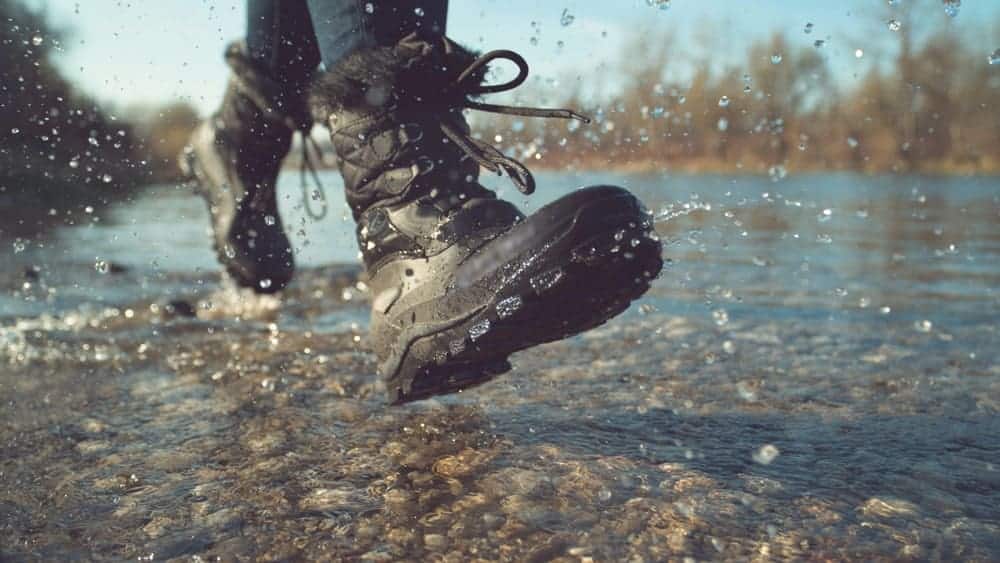
No type of boot is really guaranteed to be waterproof all the time. However, there are many different boots that do offer waterproof protection. Make sure you get the level of protection you need by checking the features of the boots. If they are waterproof, they can keep you dry even when the soles are submerged in water. If they are water-resistant, they keep you dry in rain and damp but will not keep you totally dry in standing water, snow and downpours.
Can boots be worn in summer?
There are many ways to wear boots in the summer to create really great looks. Ankle boots pair beautifully with skirts and shorts. Cowboy boots are always in season and look very stylish with a minidress or a pair of blue jeans. Some types of boots are made with peep toes, which makes them perfect for spring and summer wear.
Boots are an excellent summer choice if you’re going to be hiking, camping or enjoying outdoor activities because they give your feet protection and traction in various environments.
What is the difference between a shoe and a boot?
According to Cande Fashions, a boot is any type of footwear that goes up above the ankle. However, high-top sneakers and other types of shoes also fit this definition.
As a general rule, boot soles are a little stiffer. Shoes have soles that are more flexible.
Which types of boots can be worn with skirts and dresses?
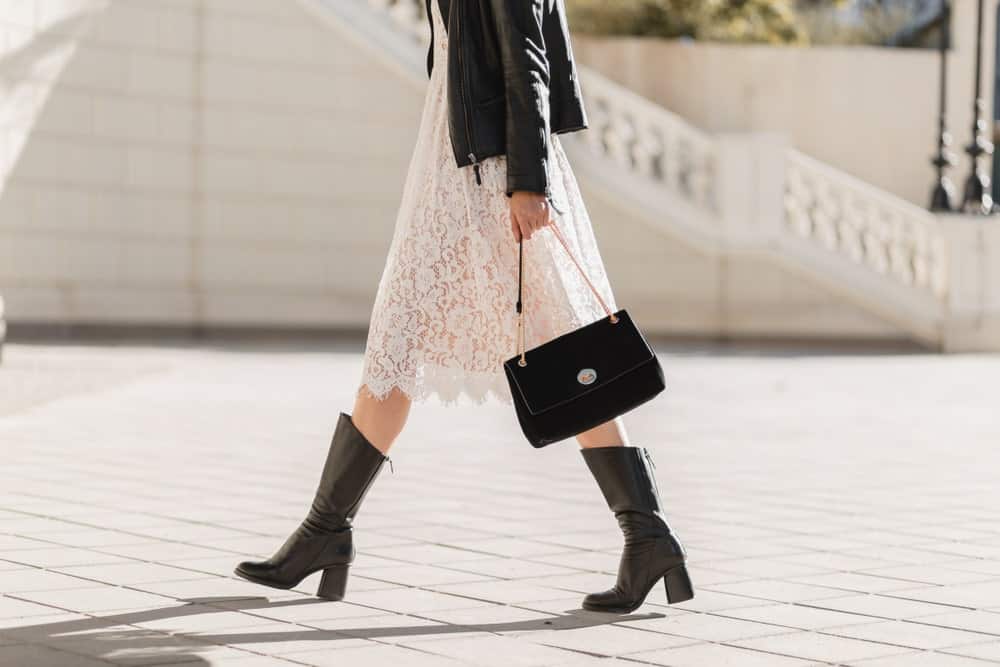
Boots aren’t just for skinny jeans. There’s practically no wrong way to wear boots with skirts and dresses. If you have confidence, you can get away with anything and look like a total trendsetter. Pair over-the-knee boots with short skirts, calf boots with midi skirts, knee-high boots with A-line and maxi skirts.
Play with different skirt lengths and boot lengths to create a perfect pair. Many people experiment with wearing combat boots with dresses. Get creative because style is never really wrong.
What are horse boots?
Horse boots are not really a type of boot. Rather, they are wraps that go around a horse’s lower legs, just above the hooves. Tendon boots are another type of horse boots.
References:
The Fabric of Our Lives: What is denim?
Grailed: Five Military Footwear Styles That Transformed Fashion
Love to Know: History of Boots
My Work Wear: Top 15 Best Logger Work Boots in 2021 – Ultimate Guide
The Spruce: How to Clean 5 Types of Shoes Fast
Walk With Boots: How the First Boots are Made
